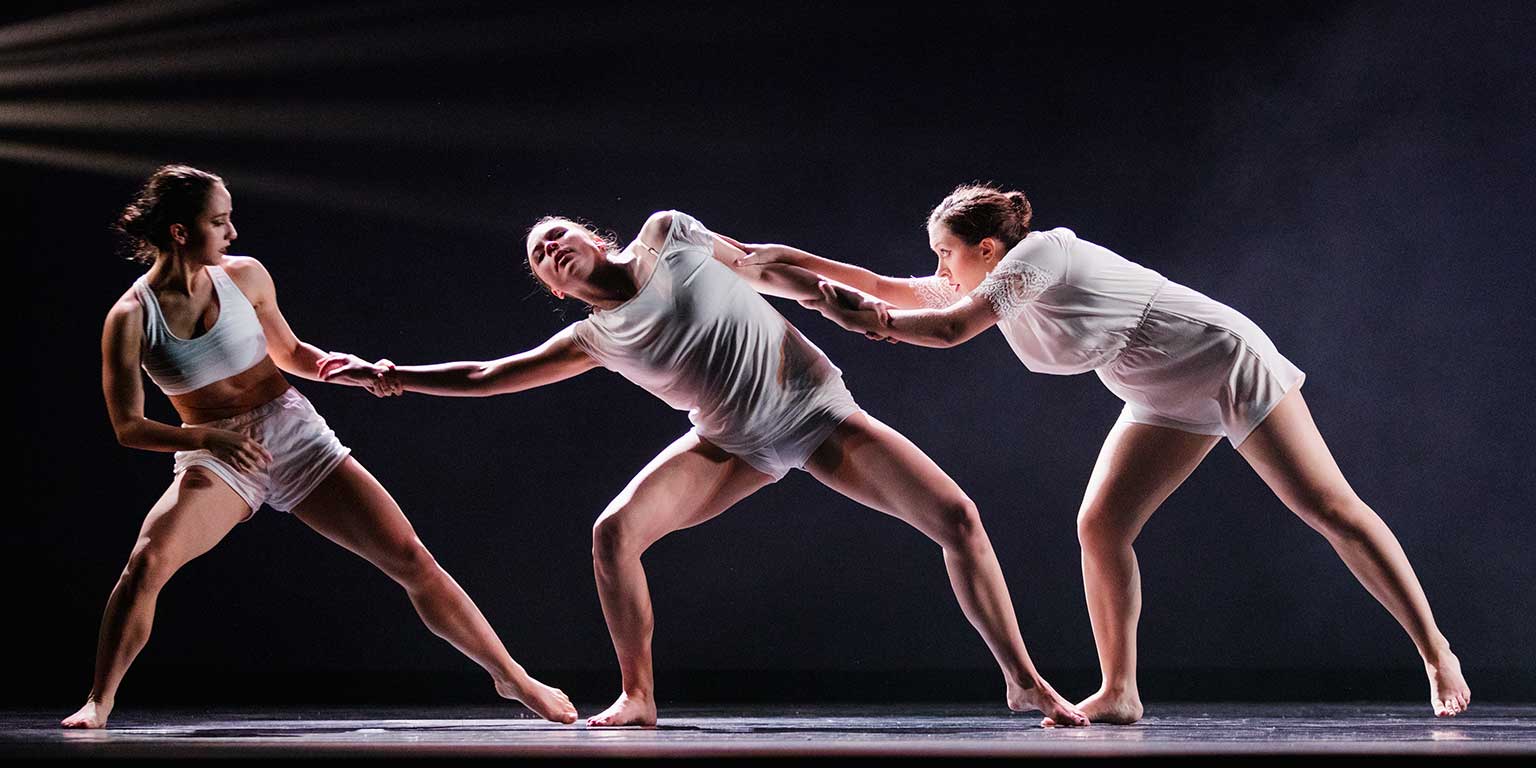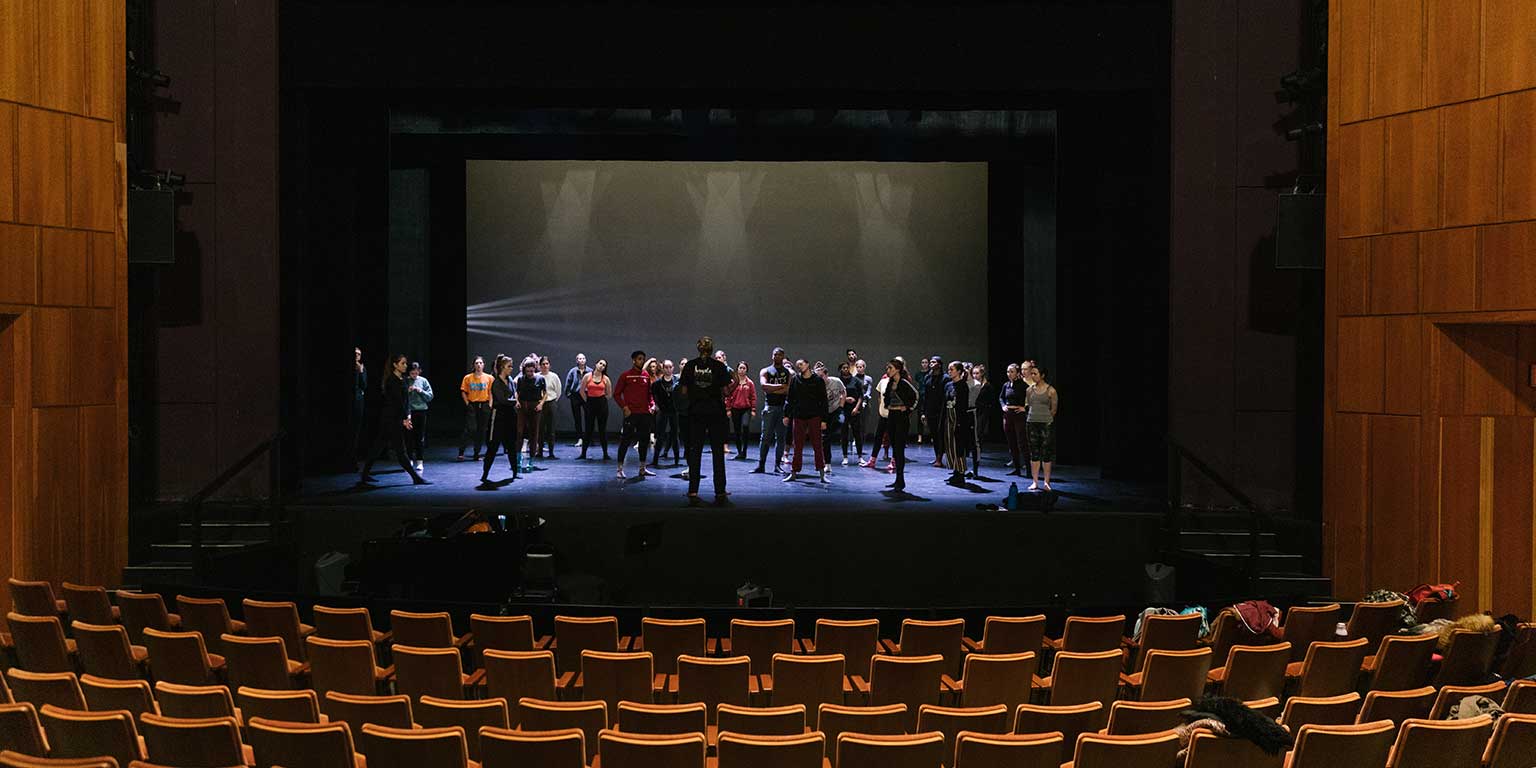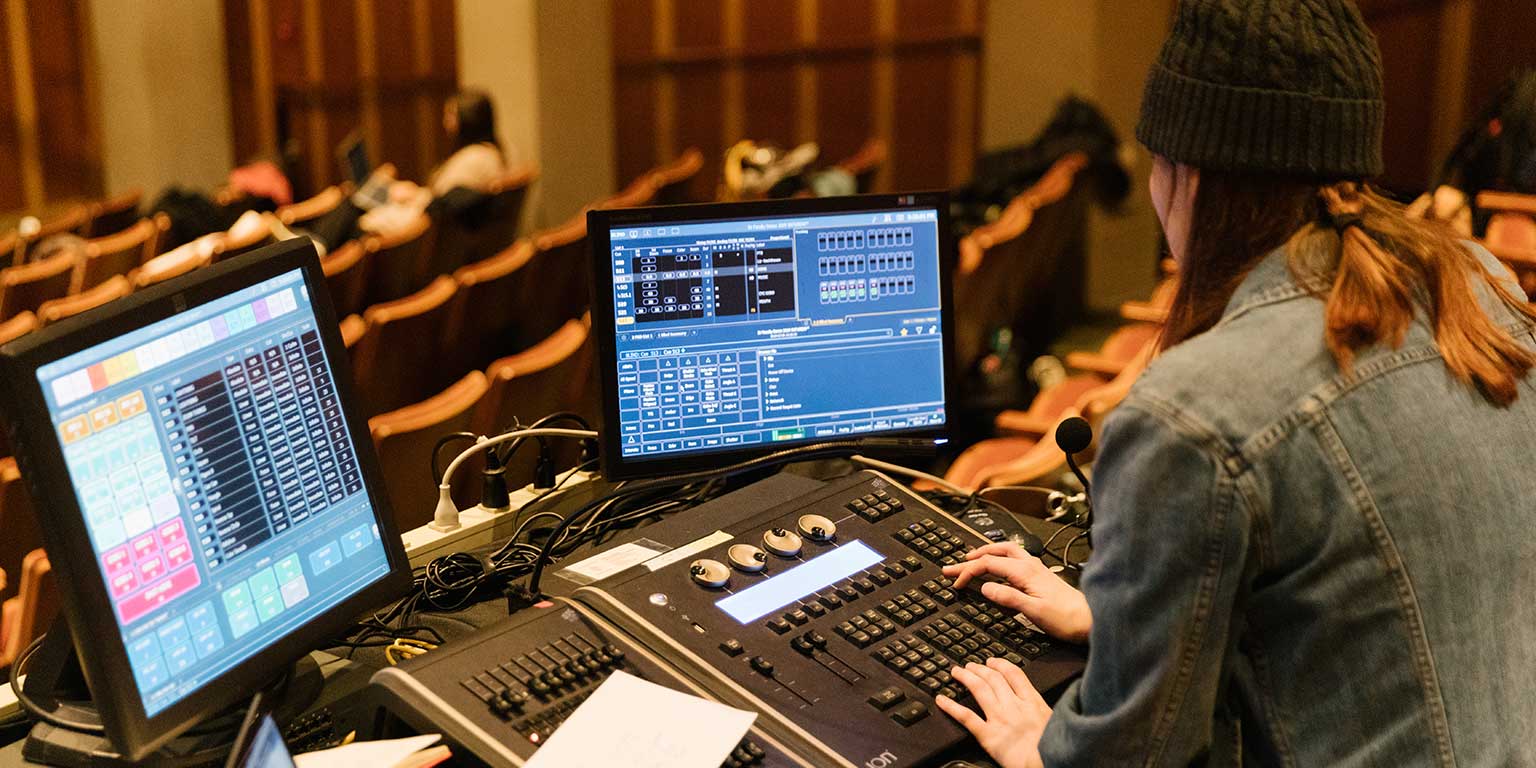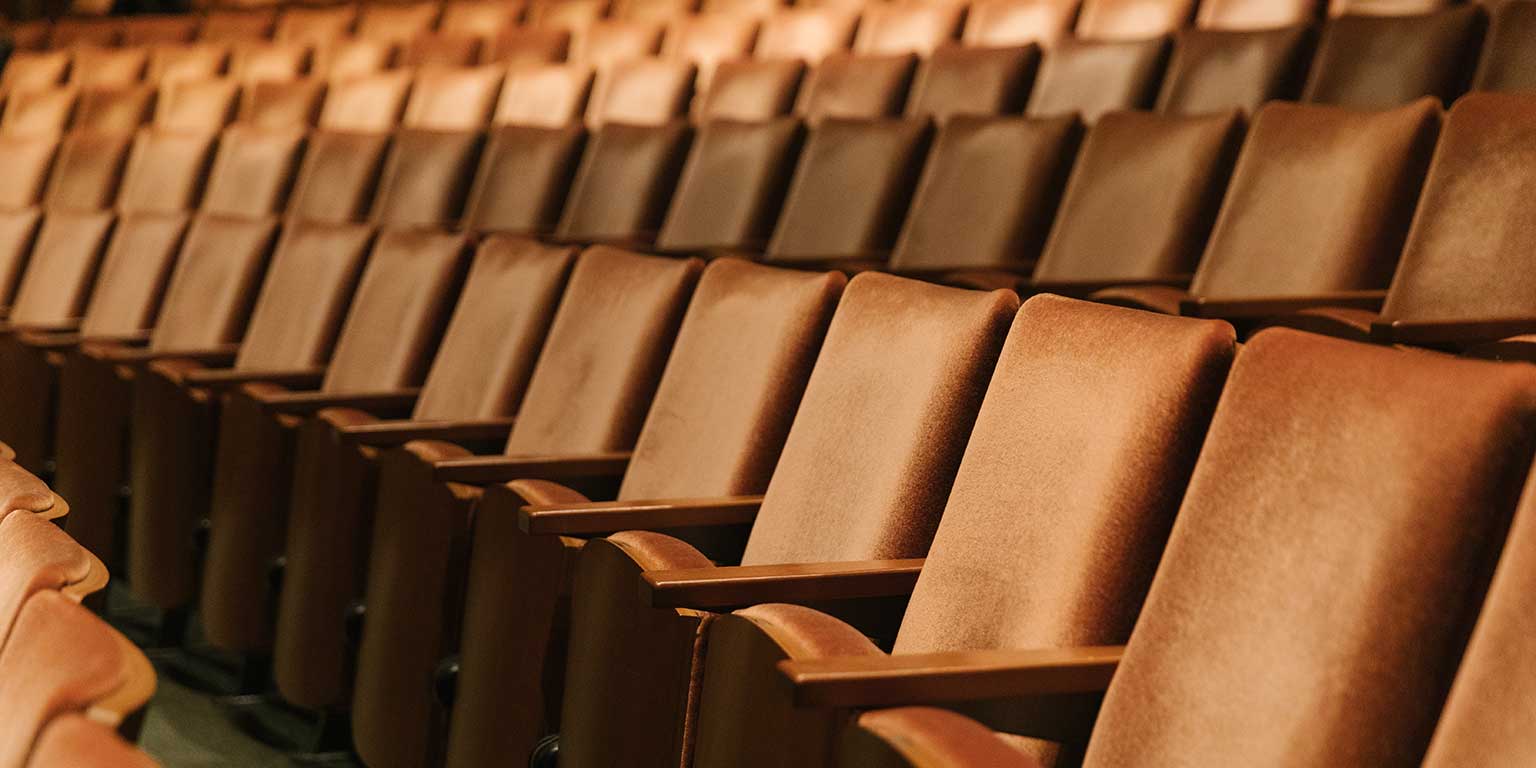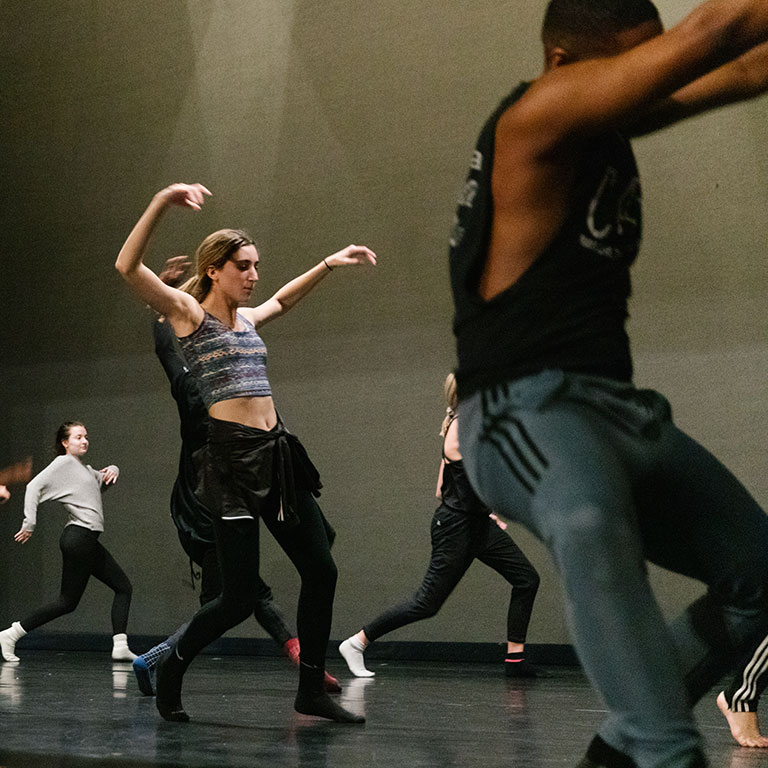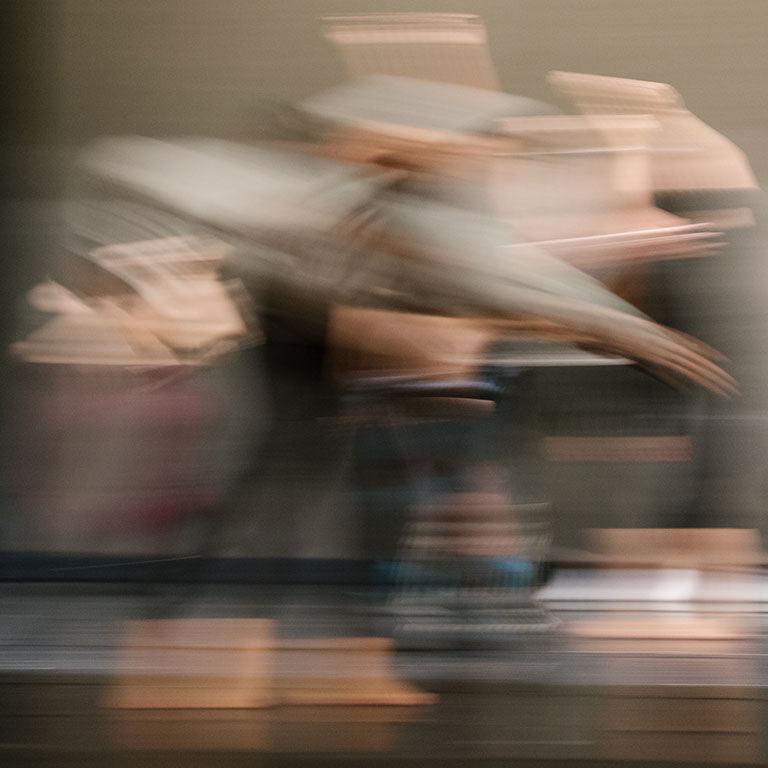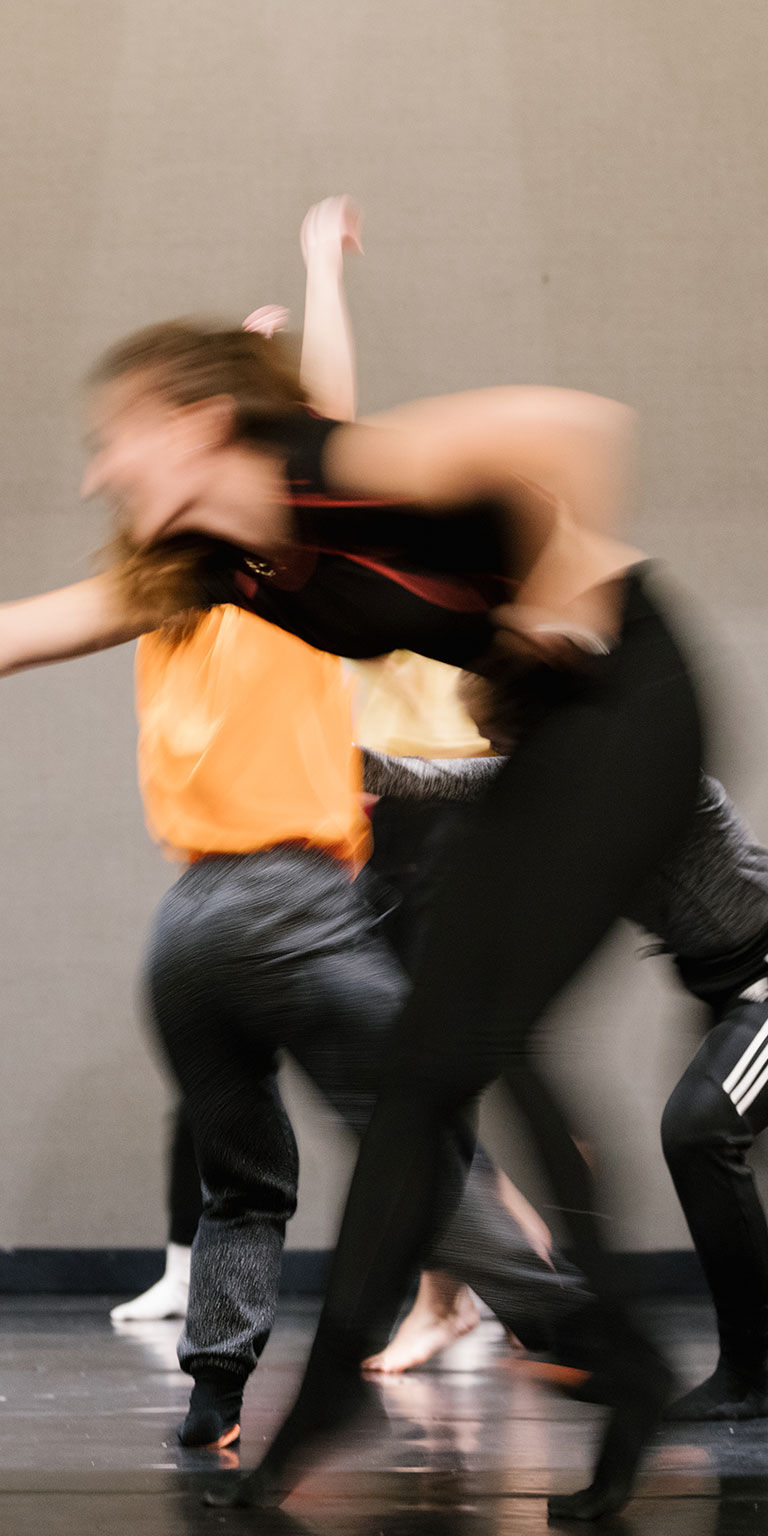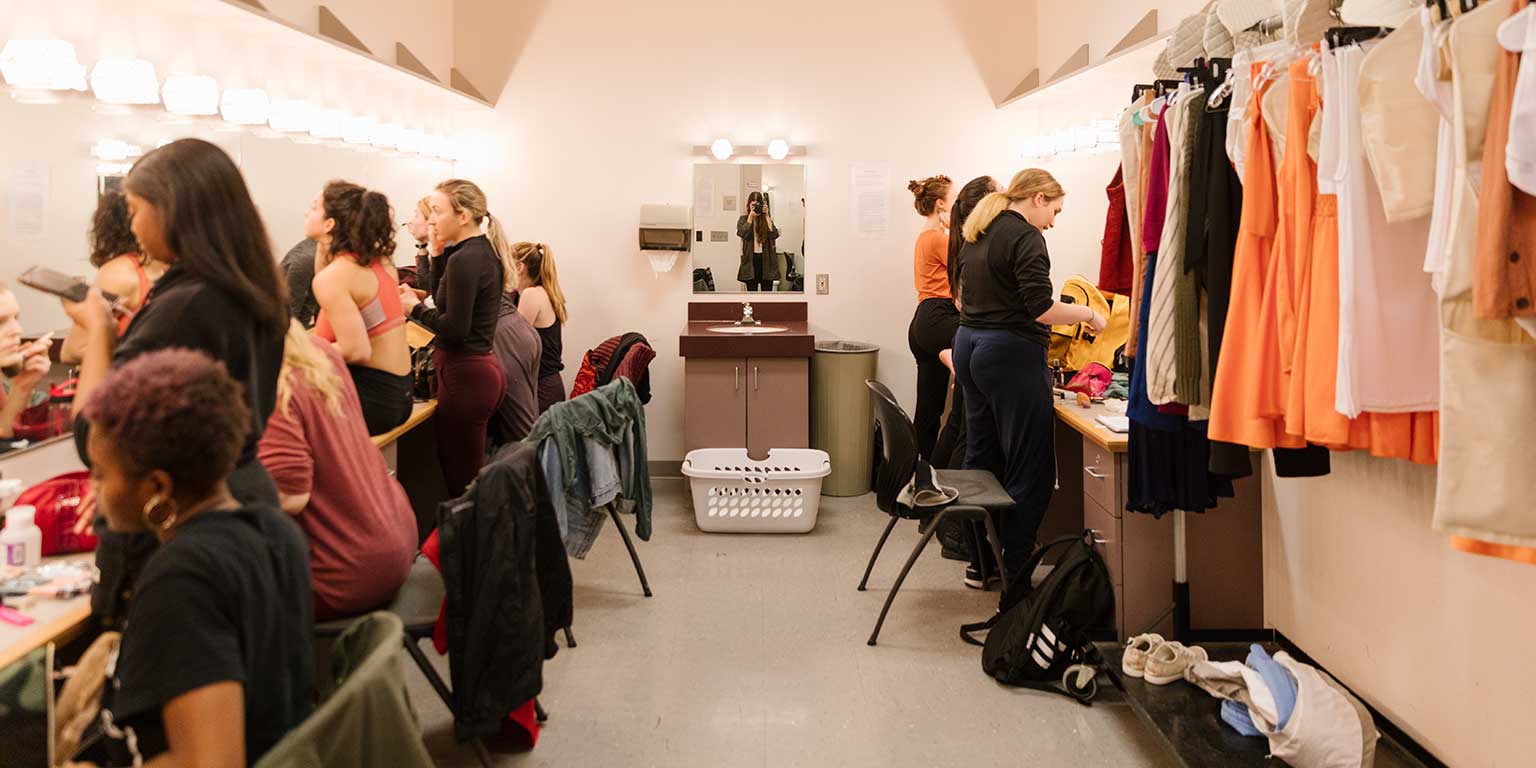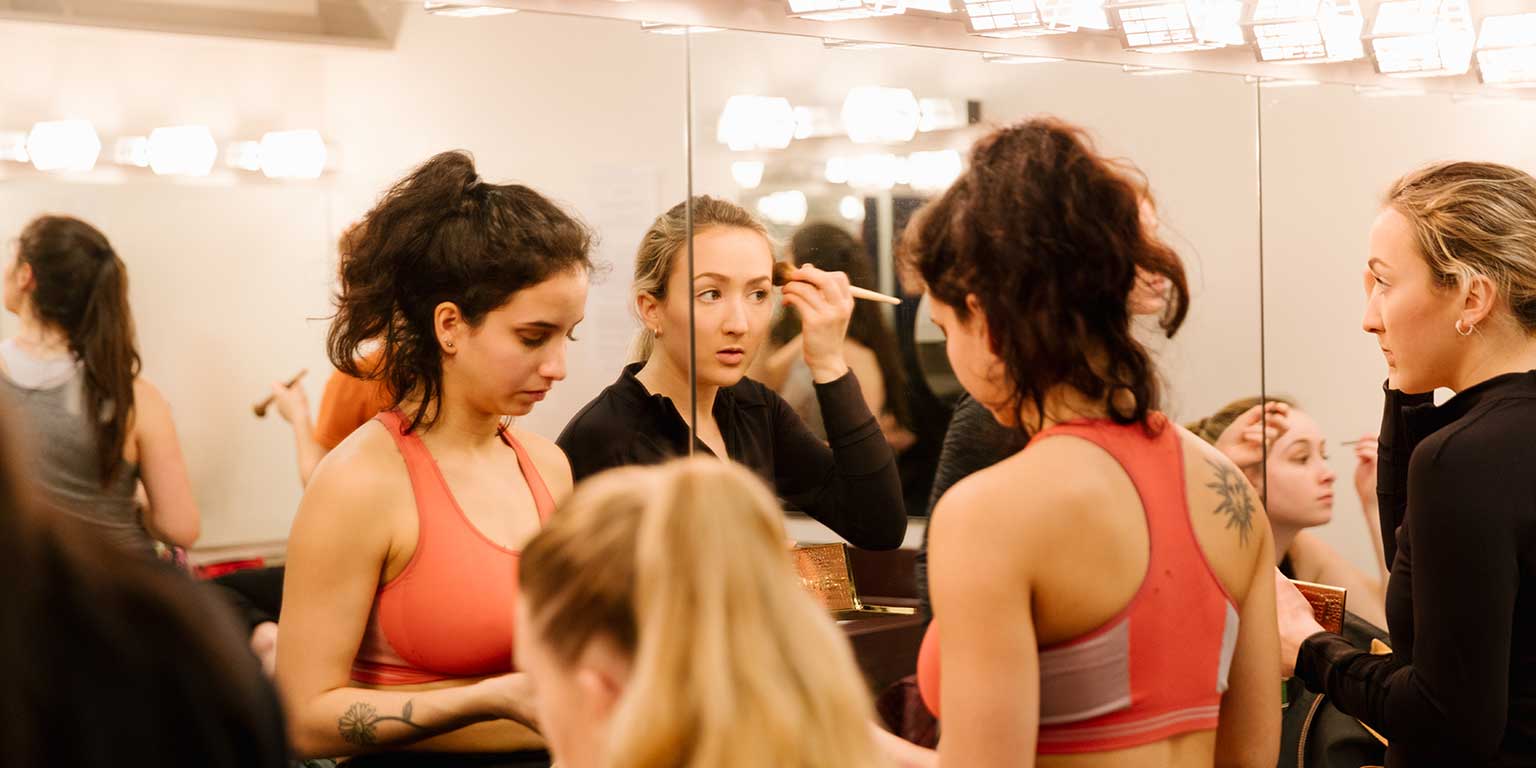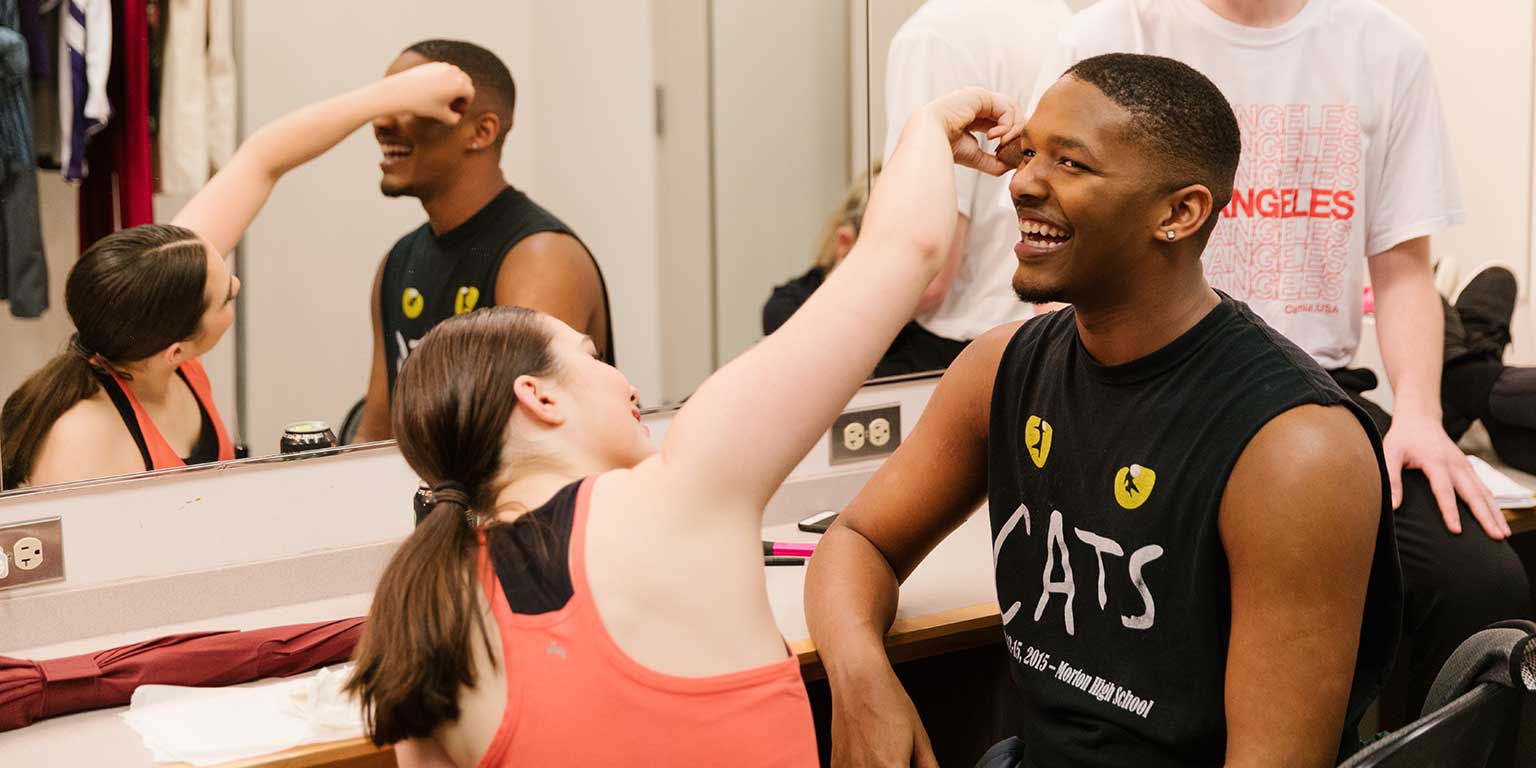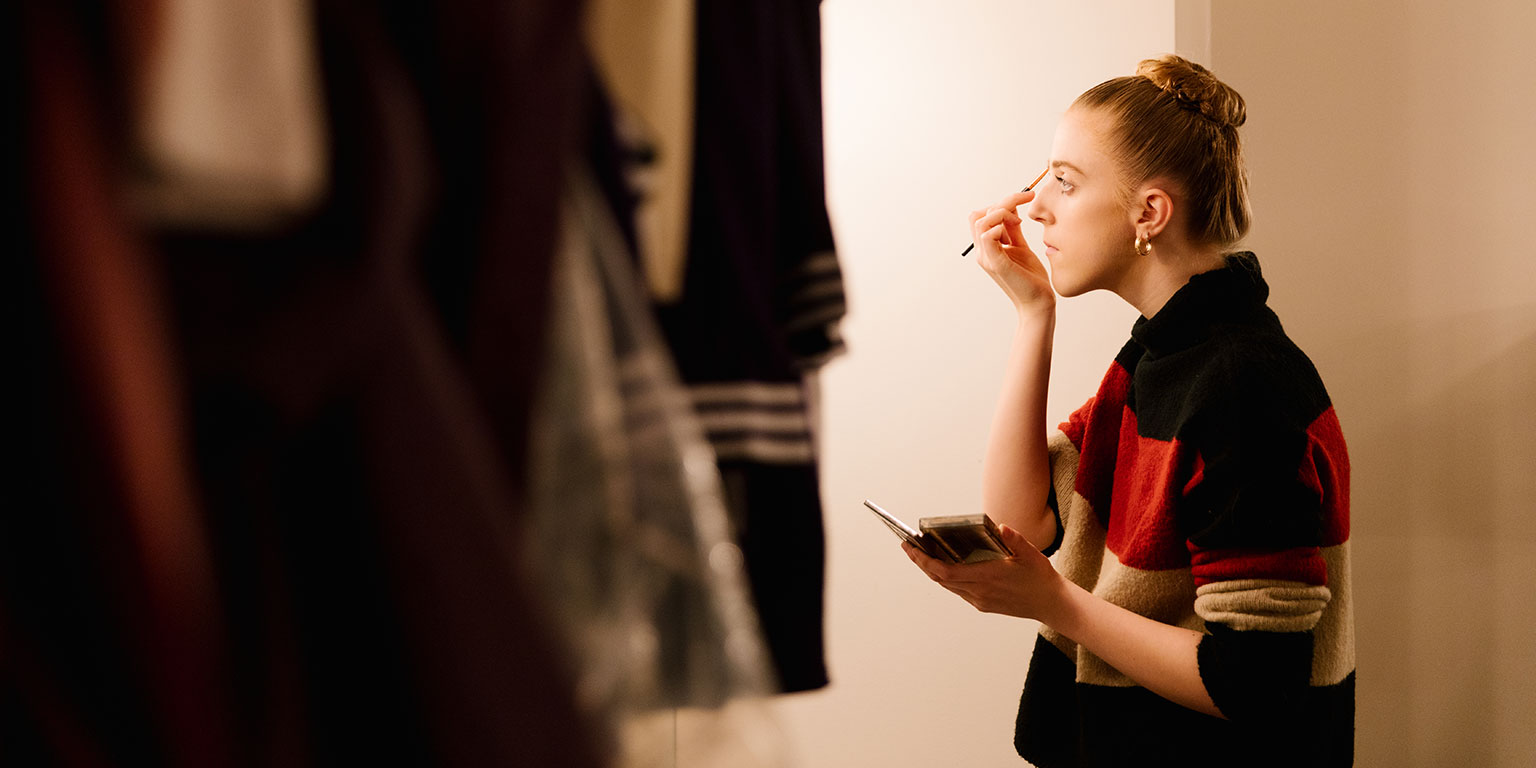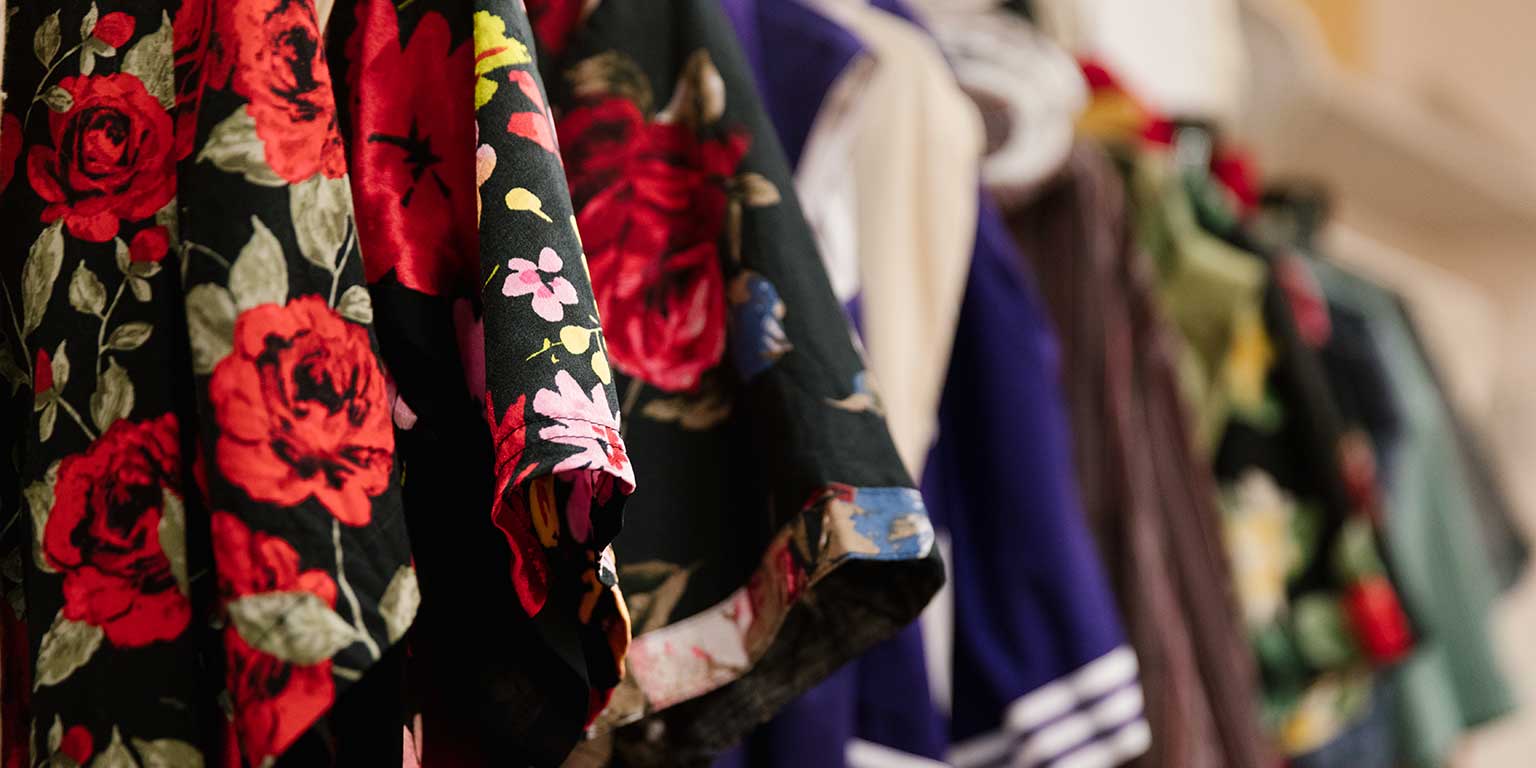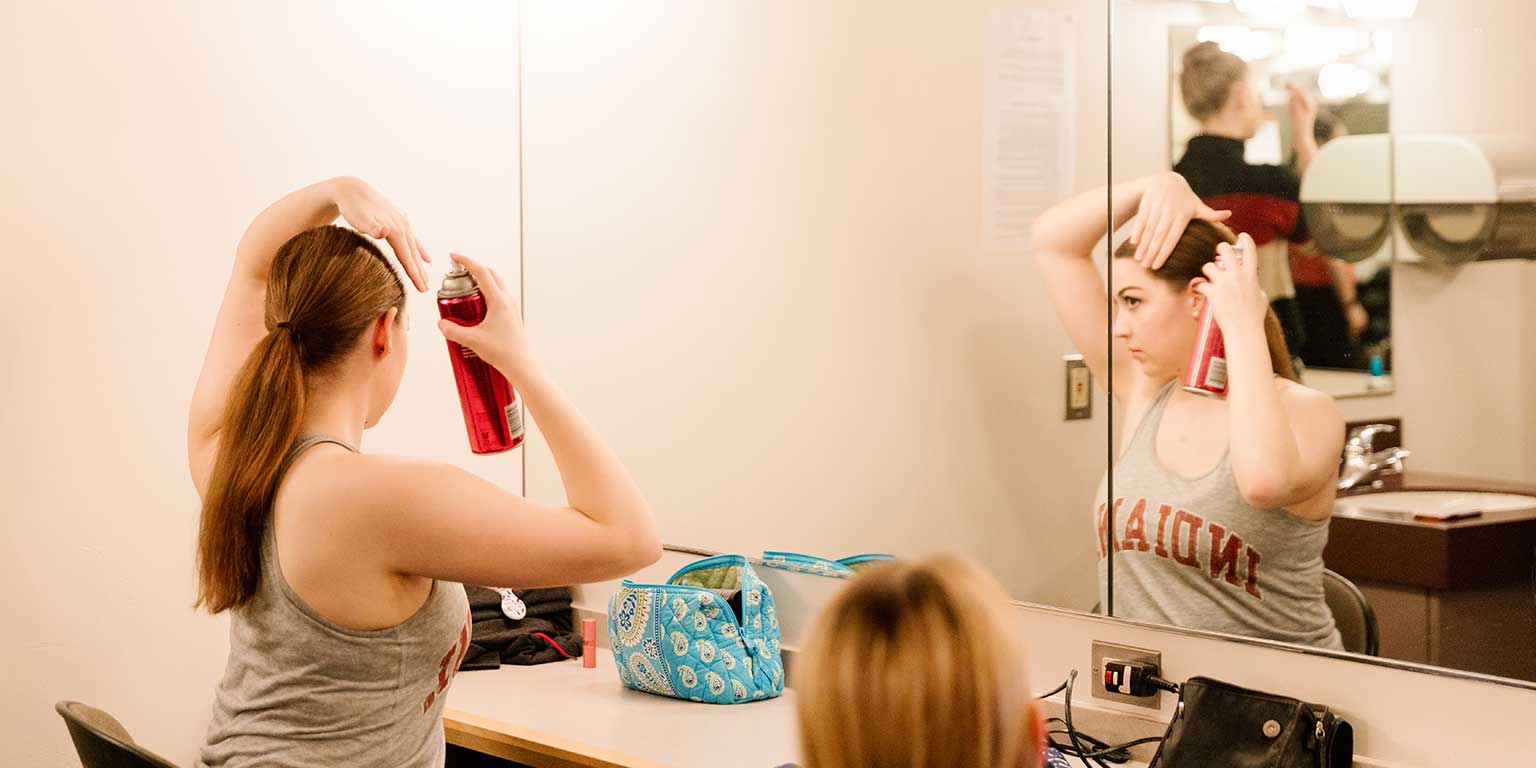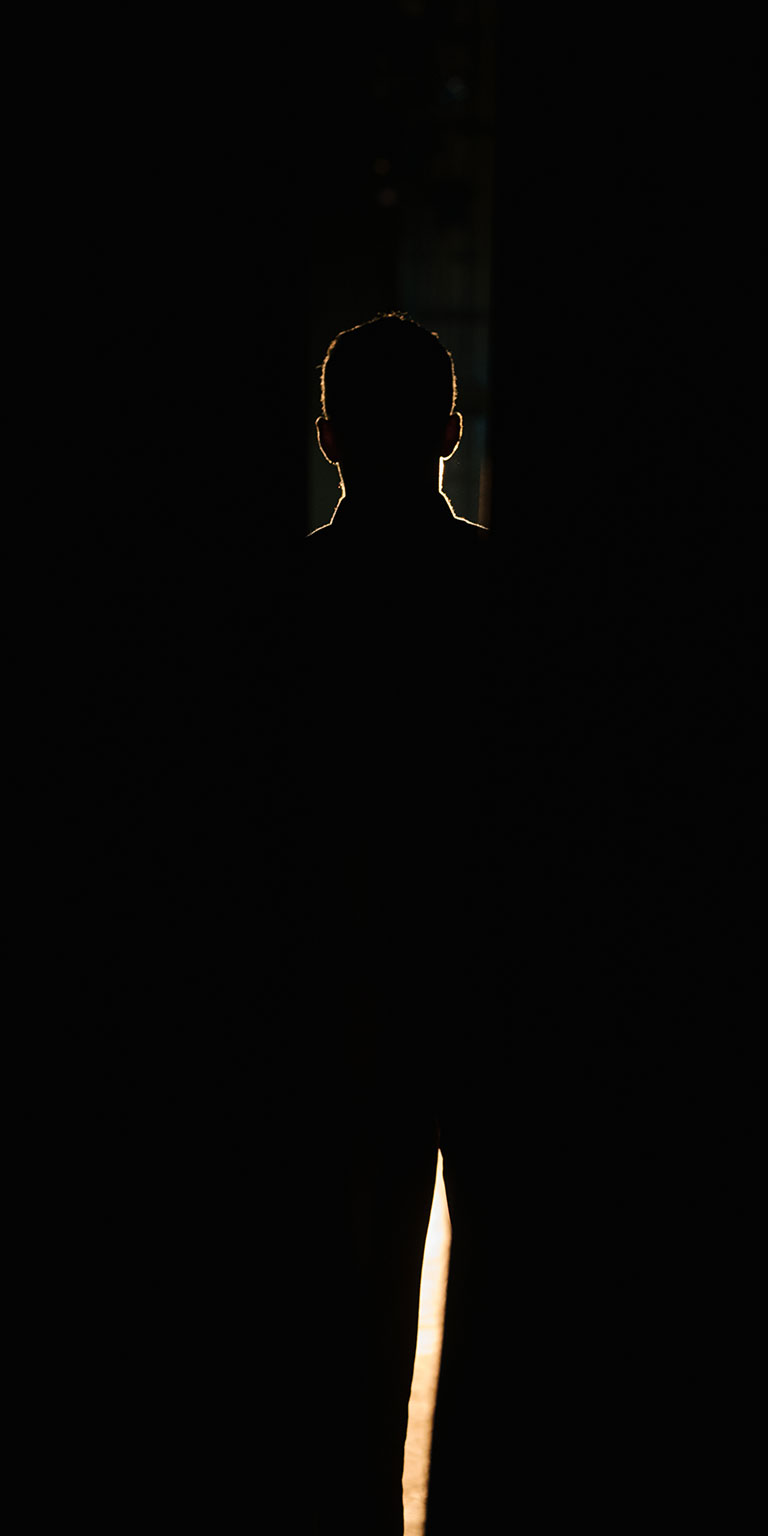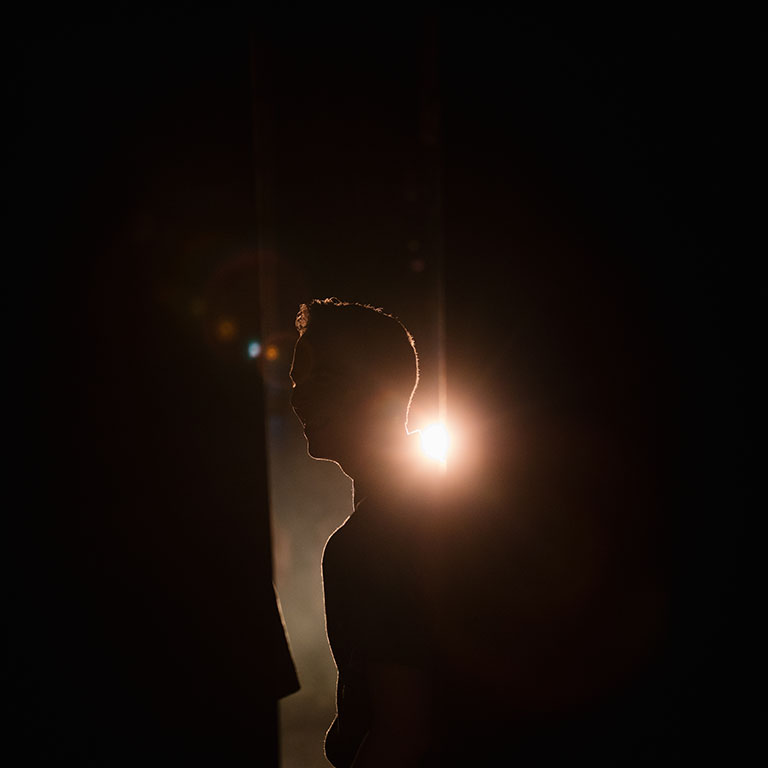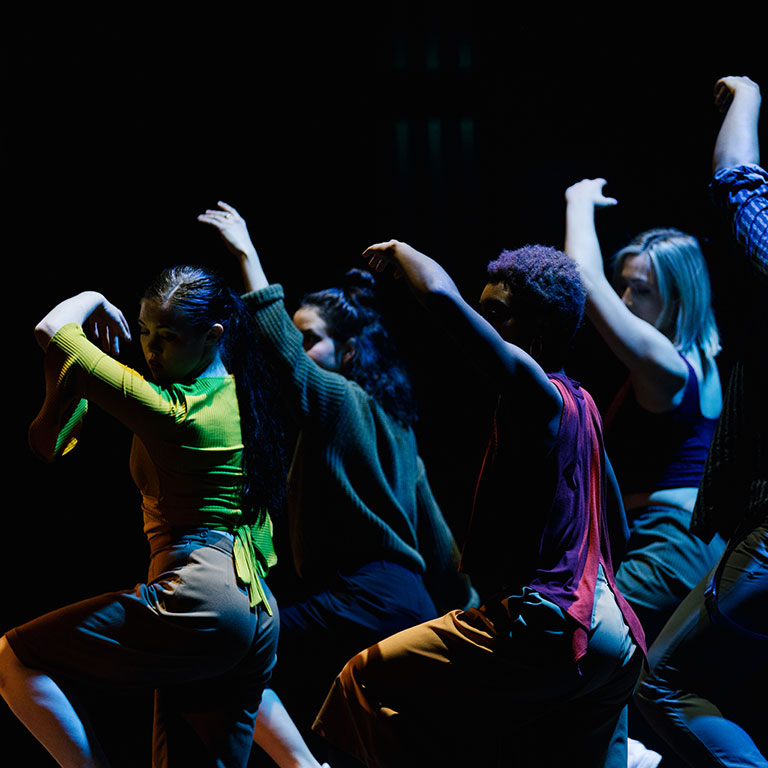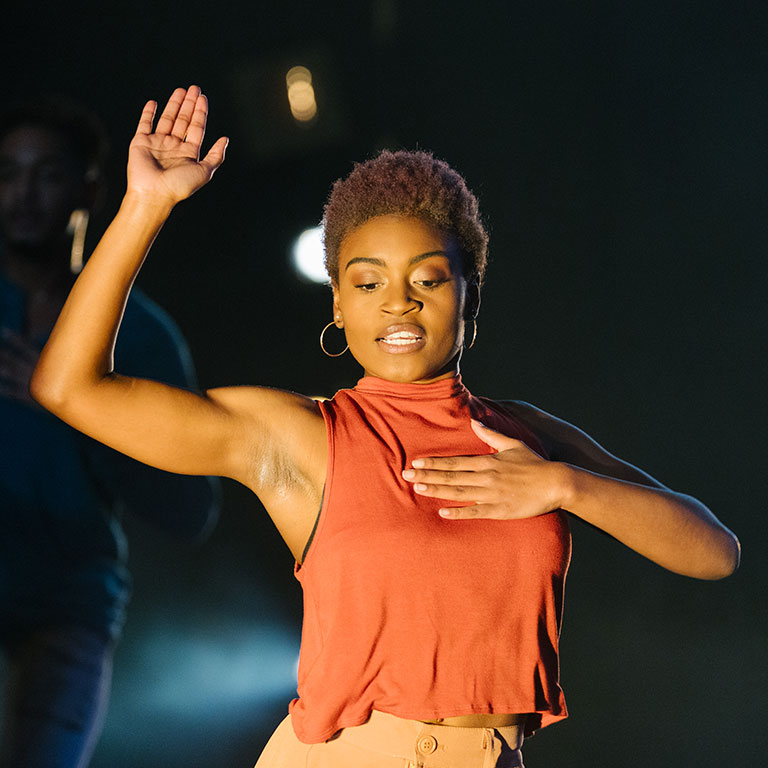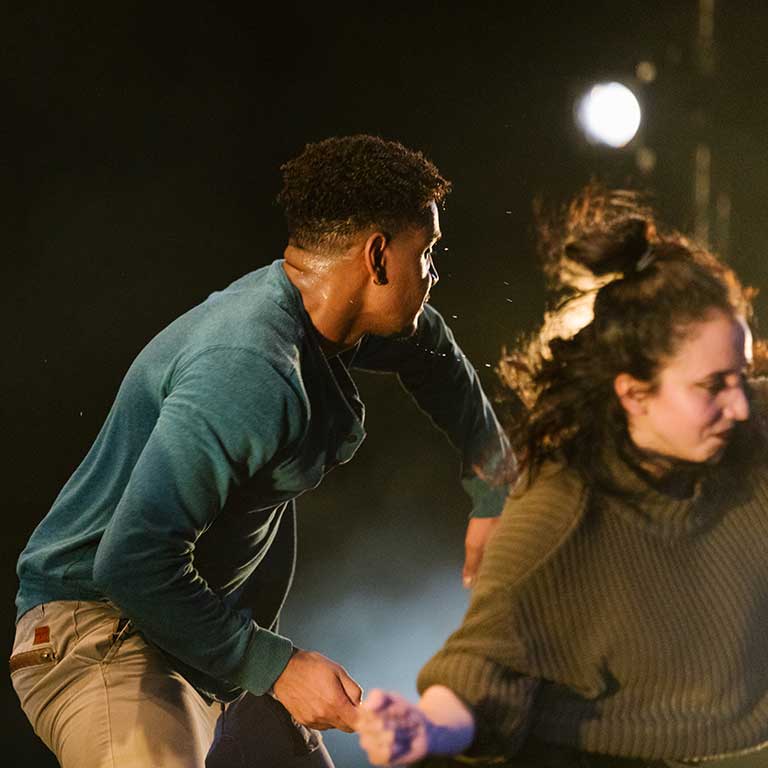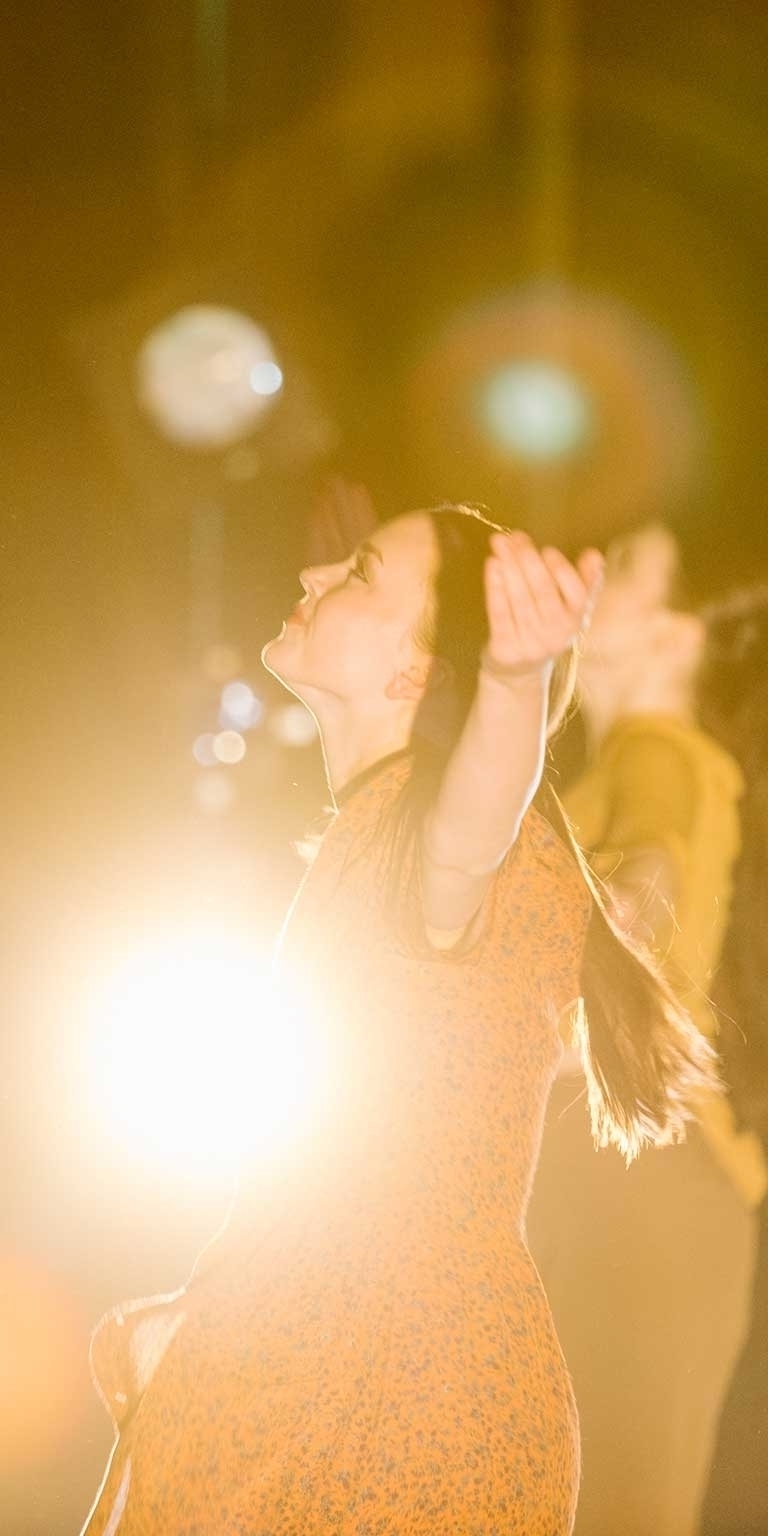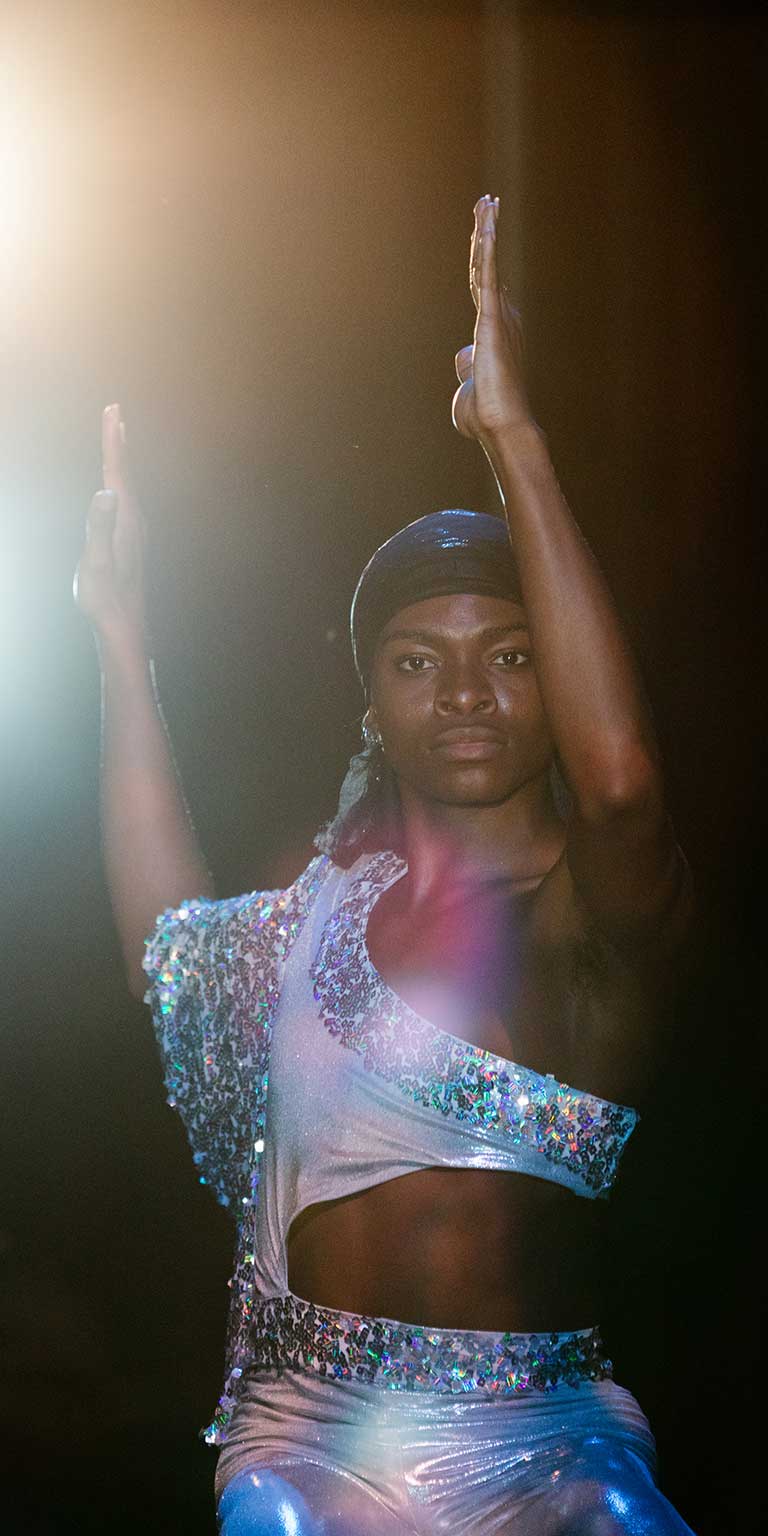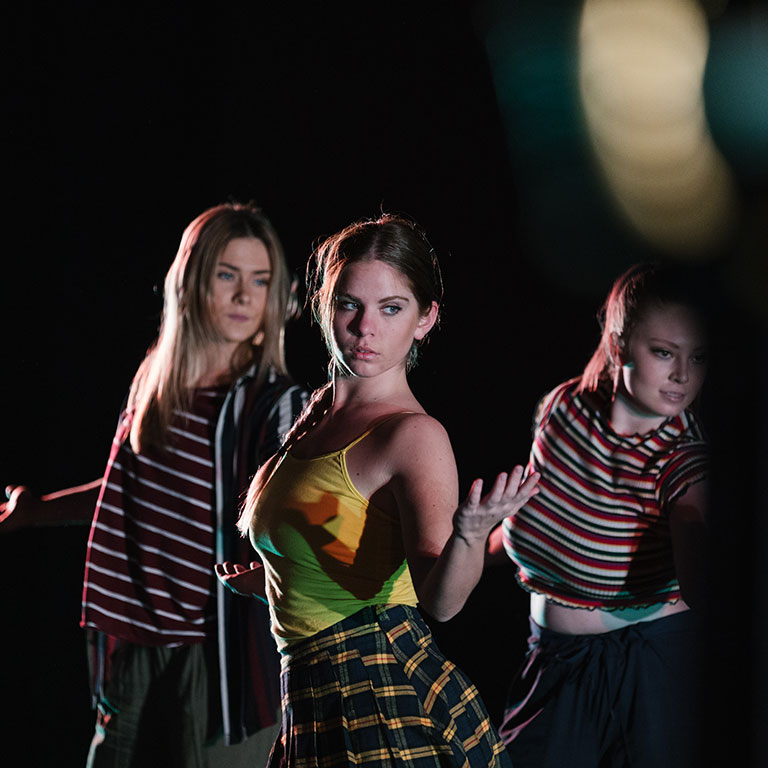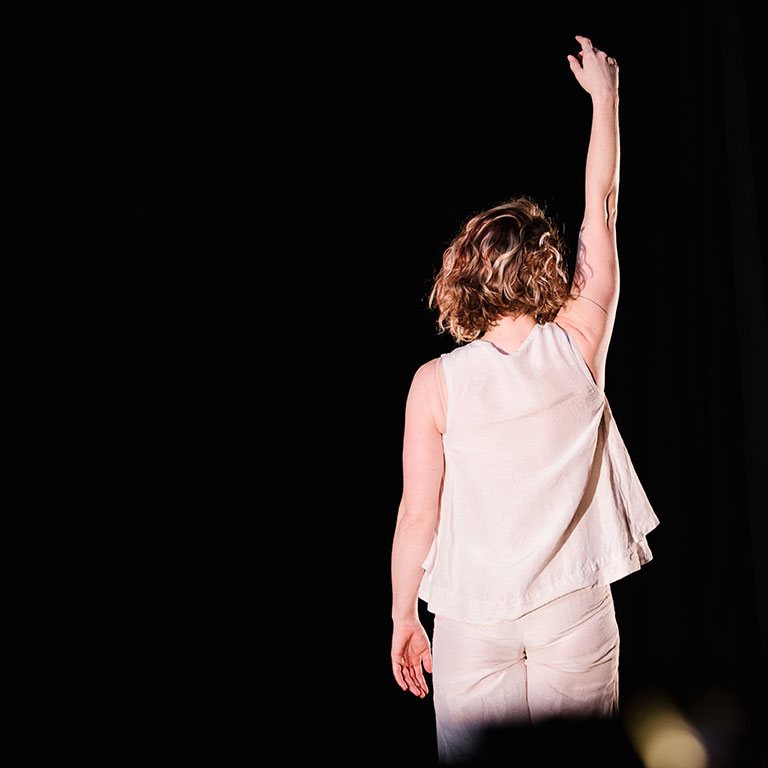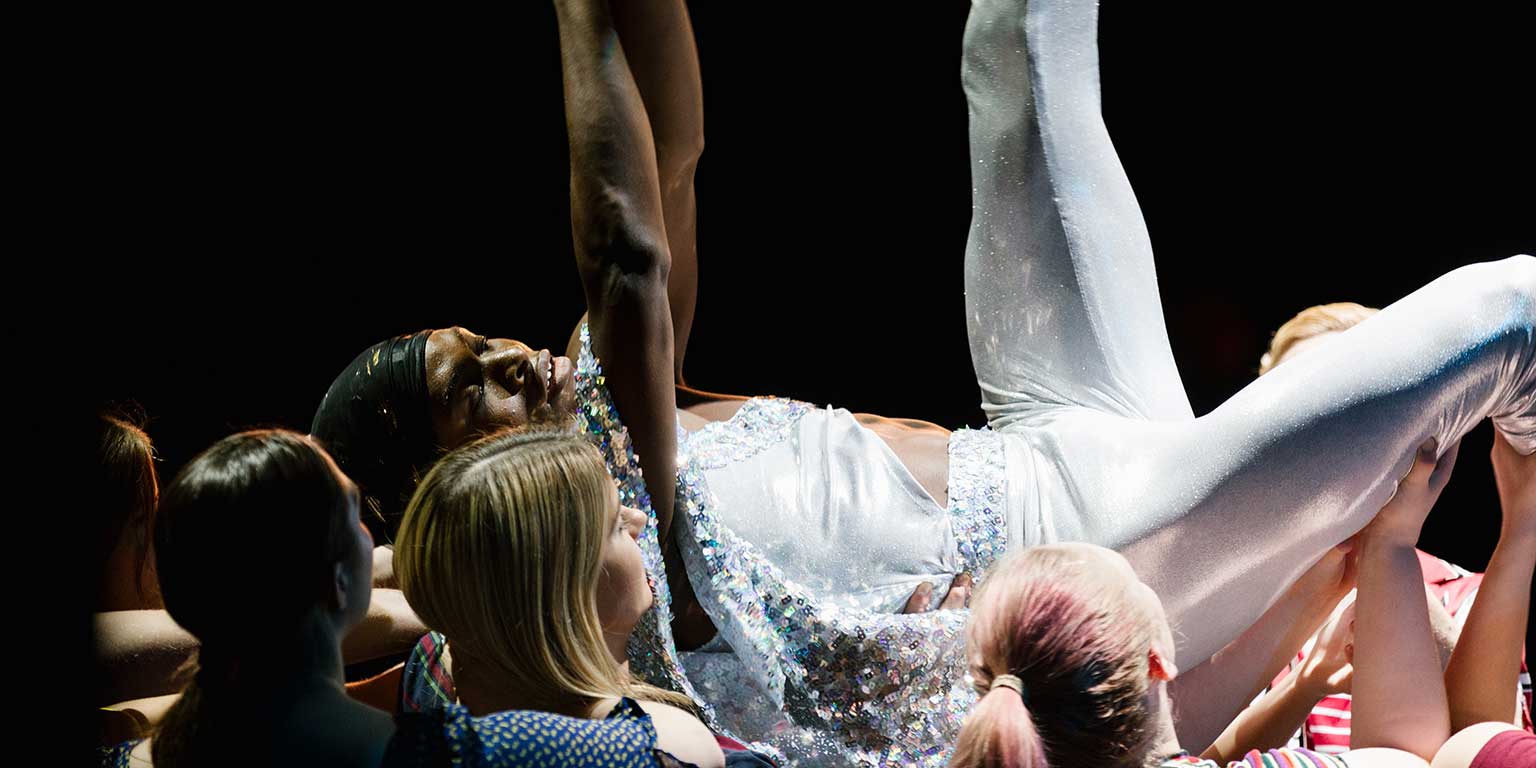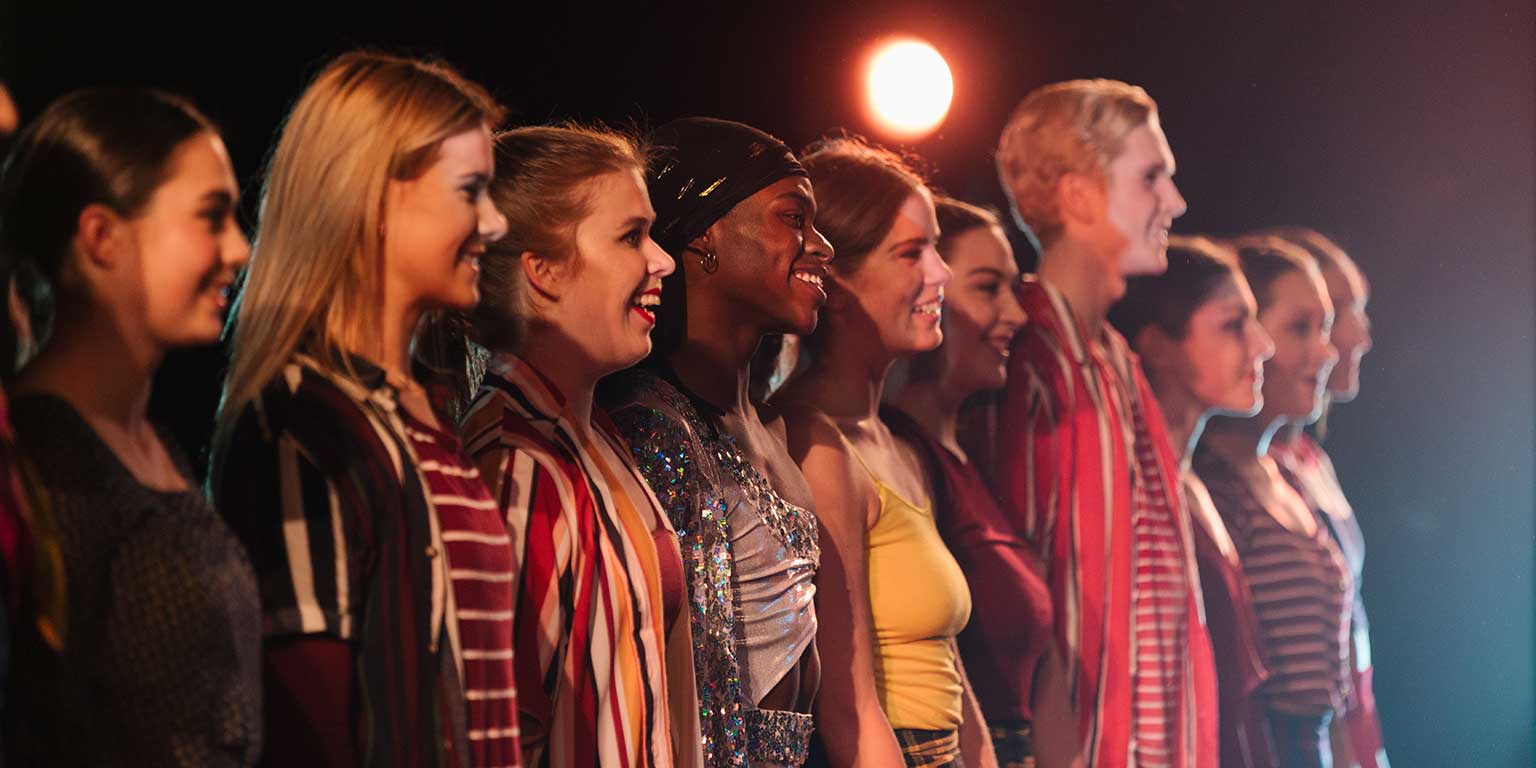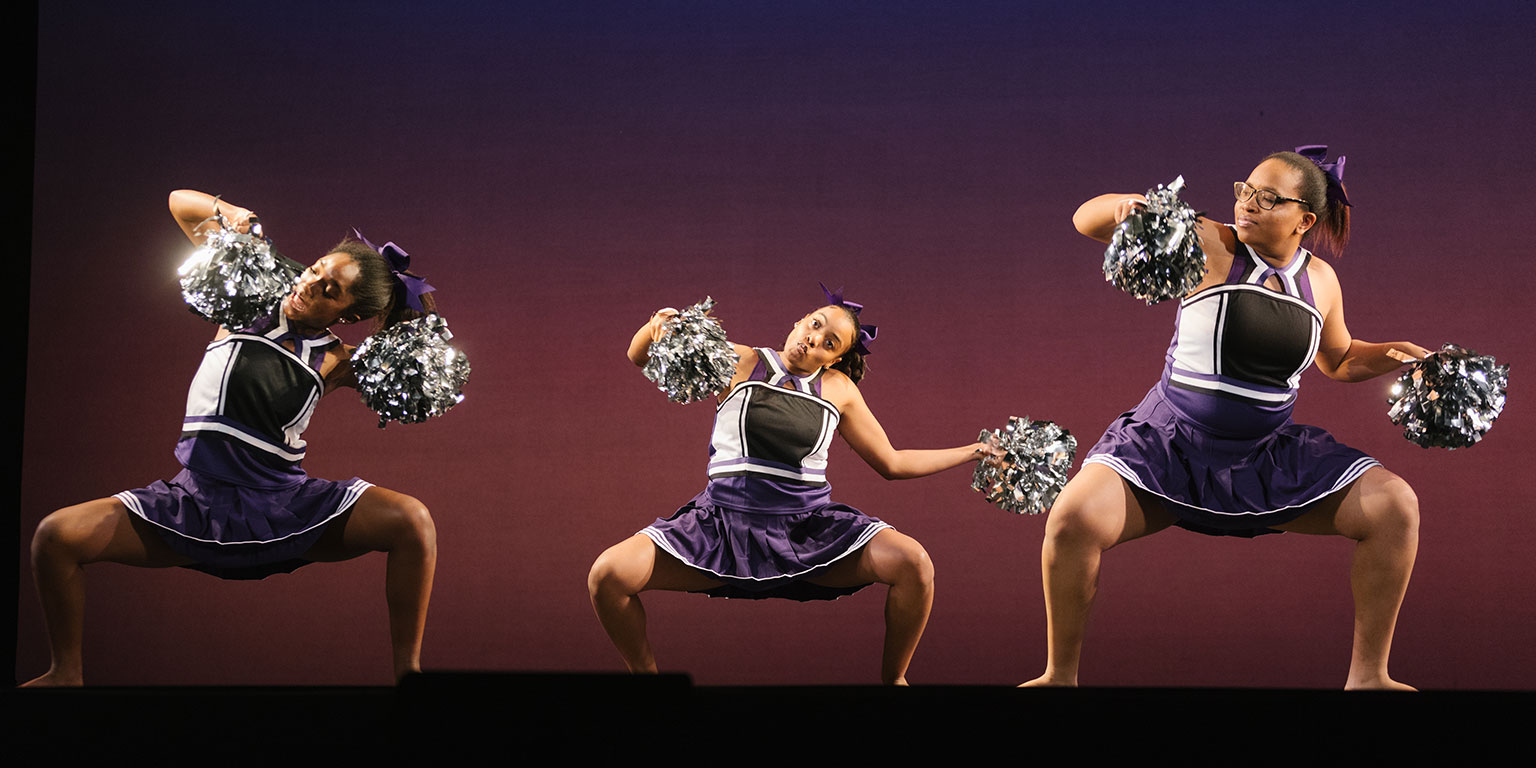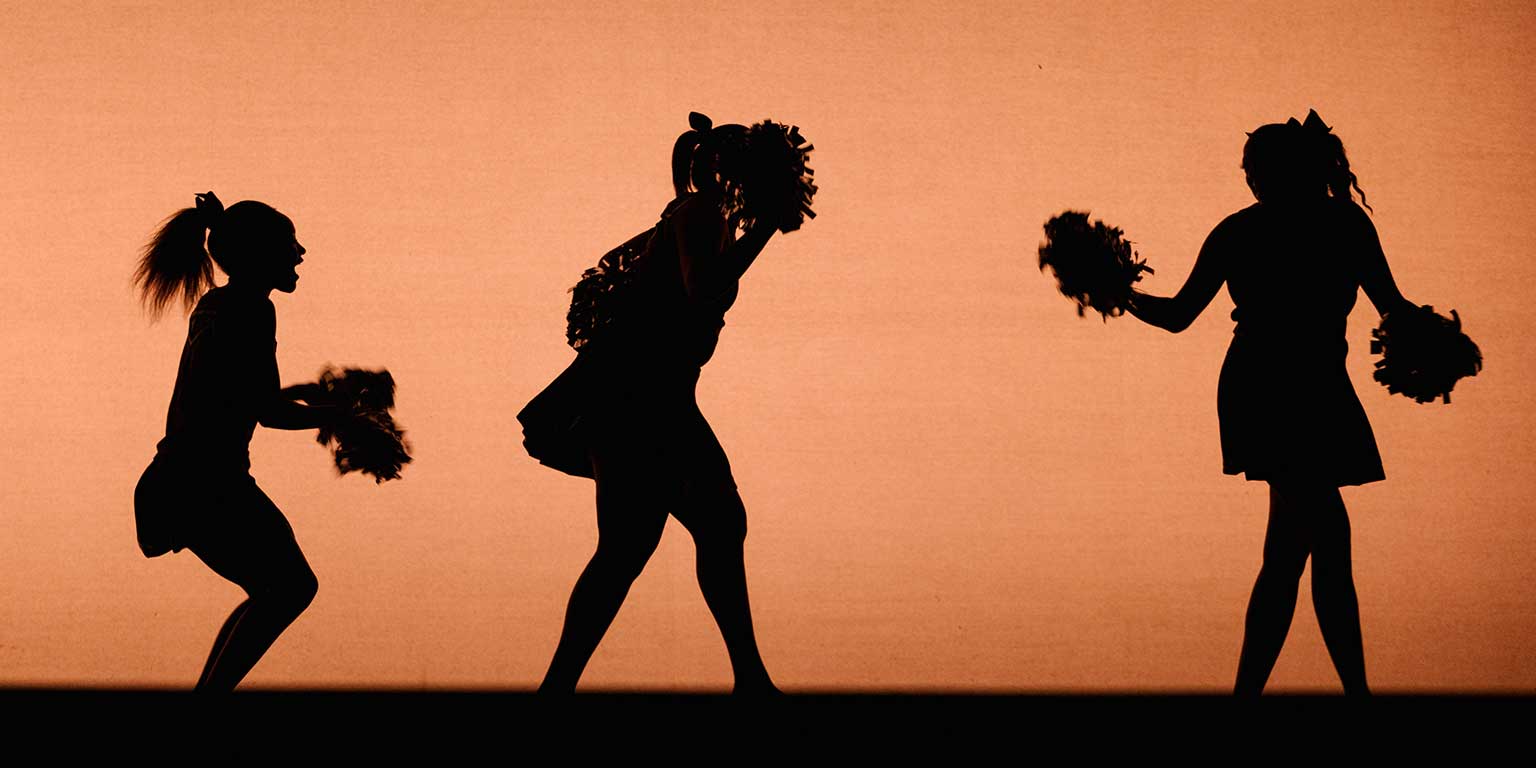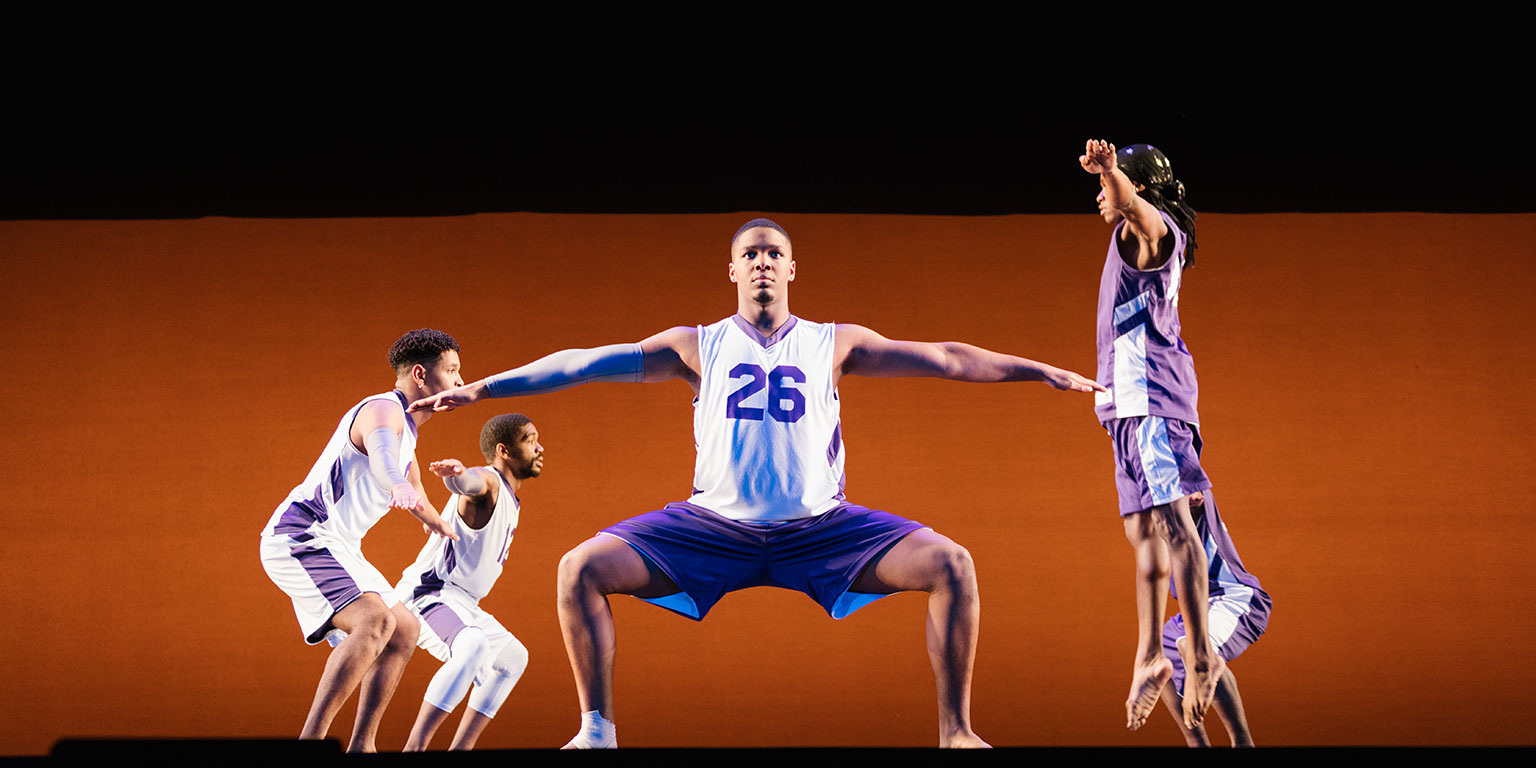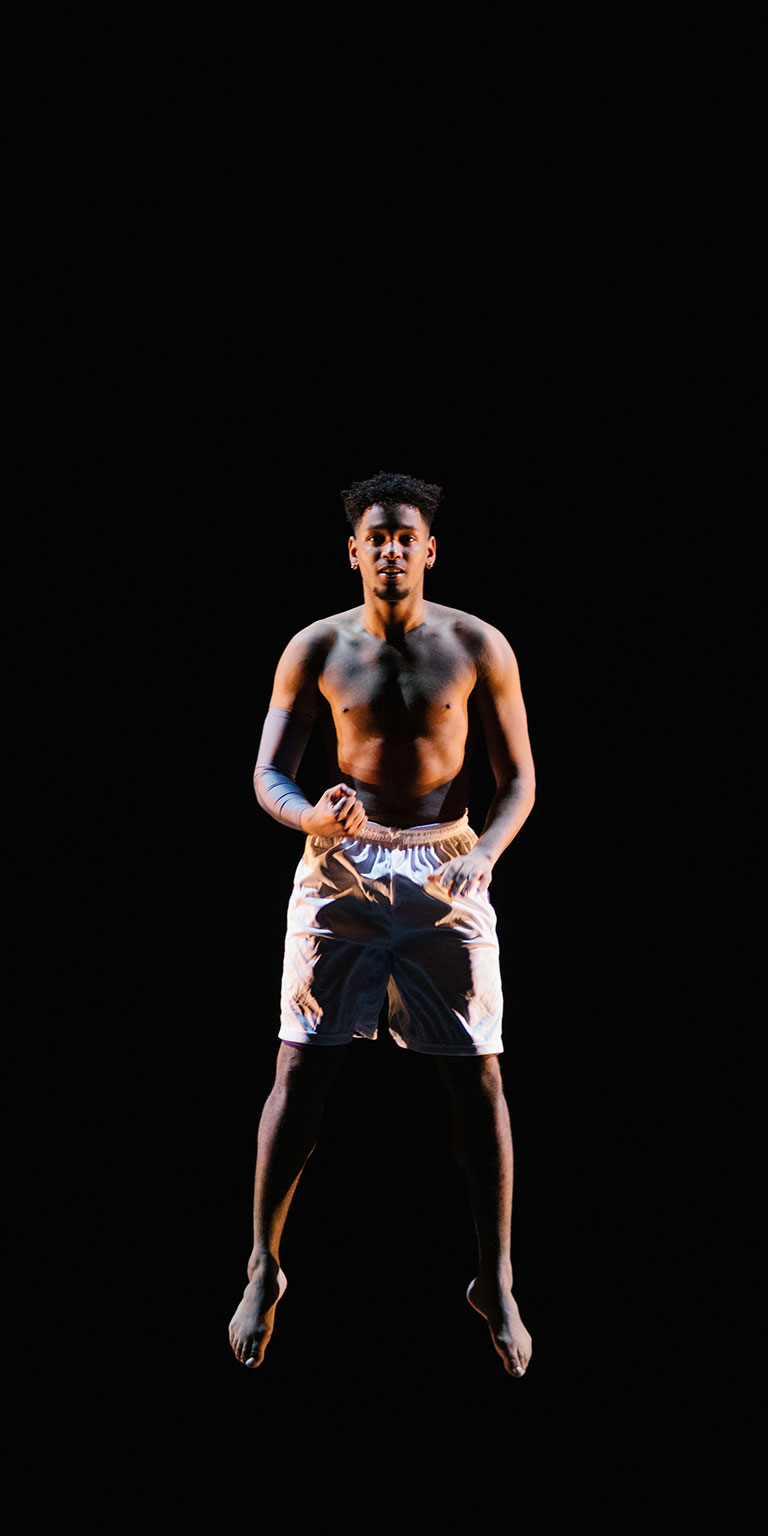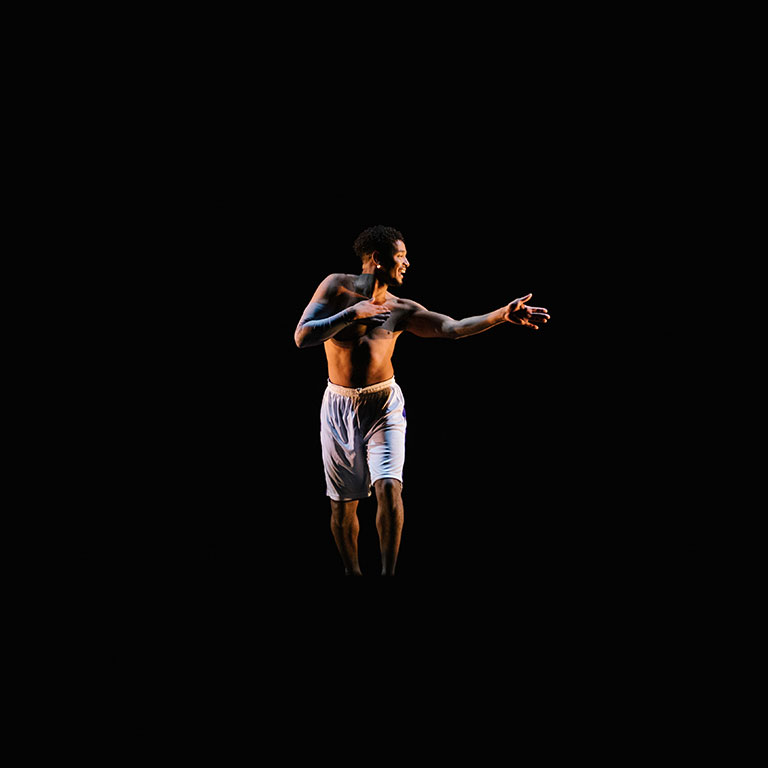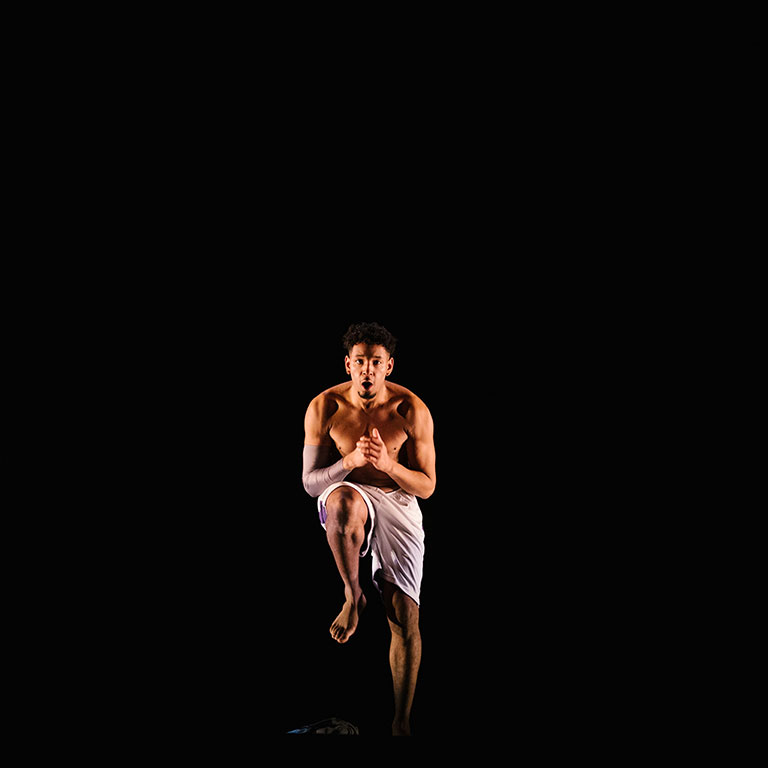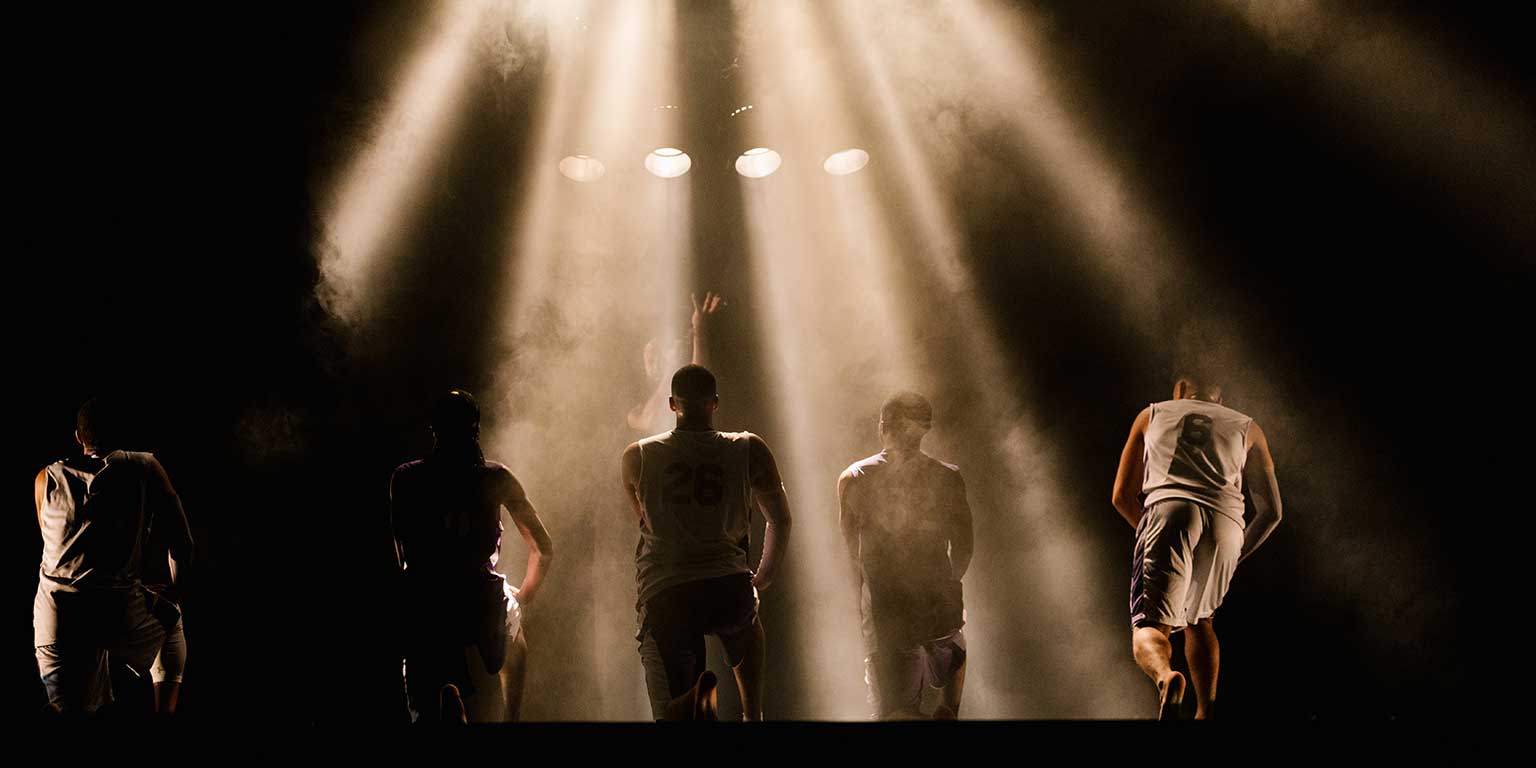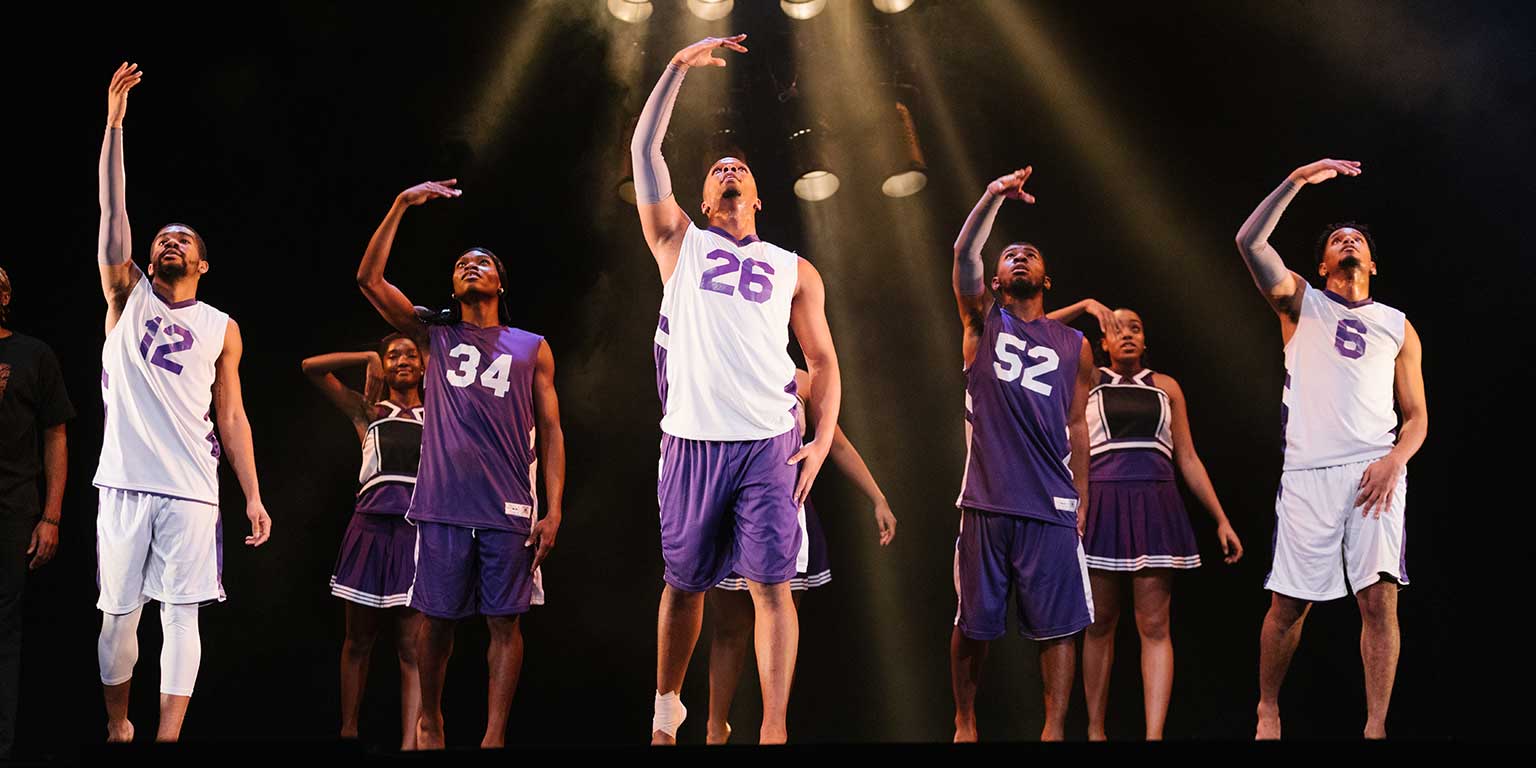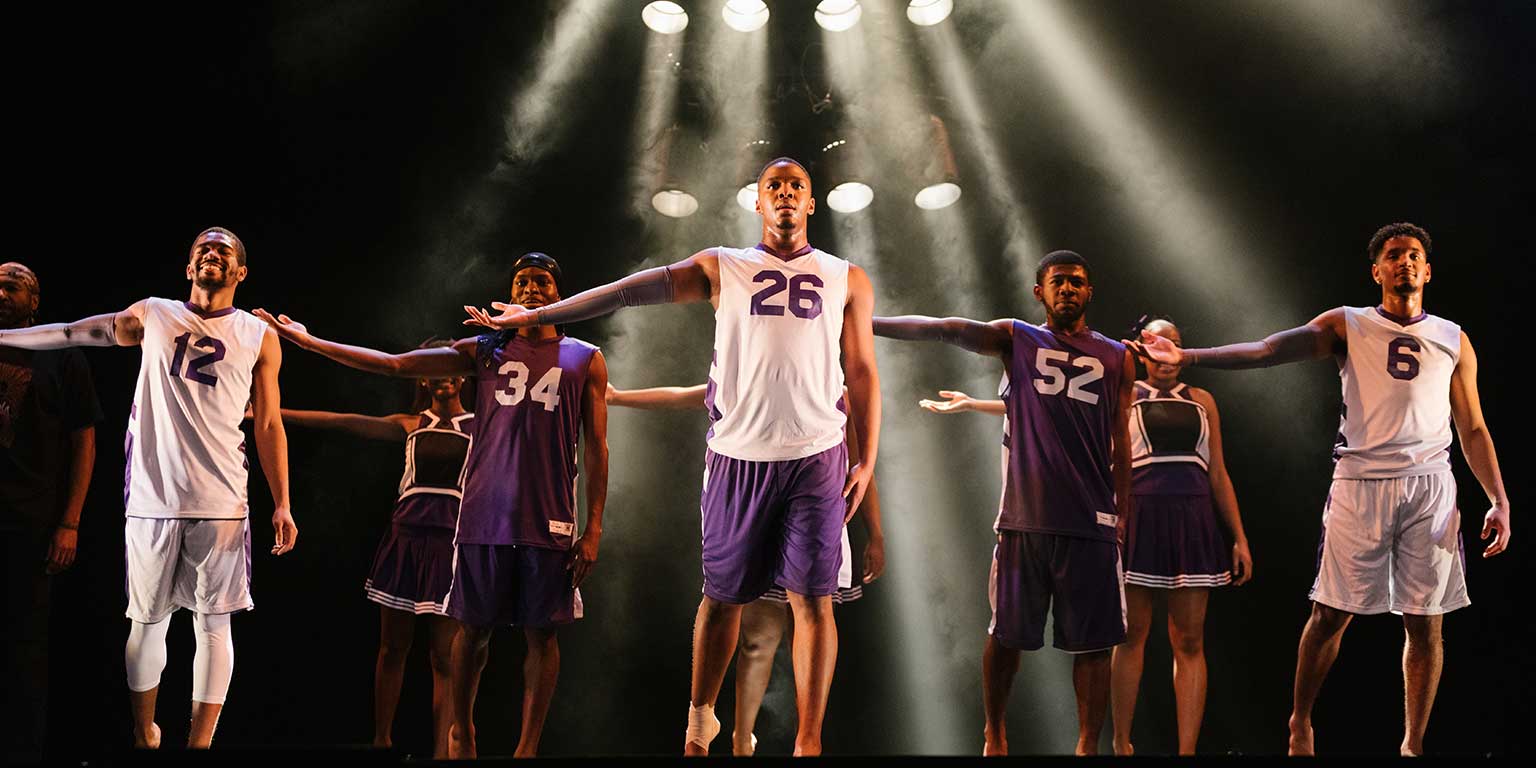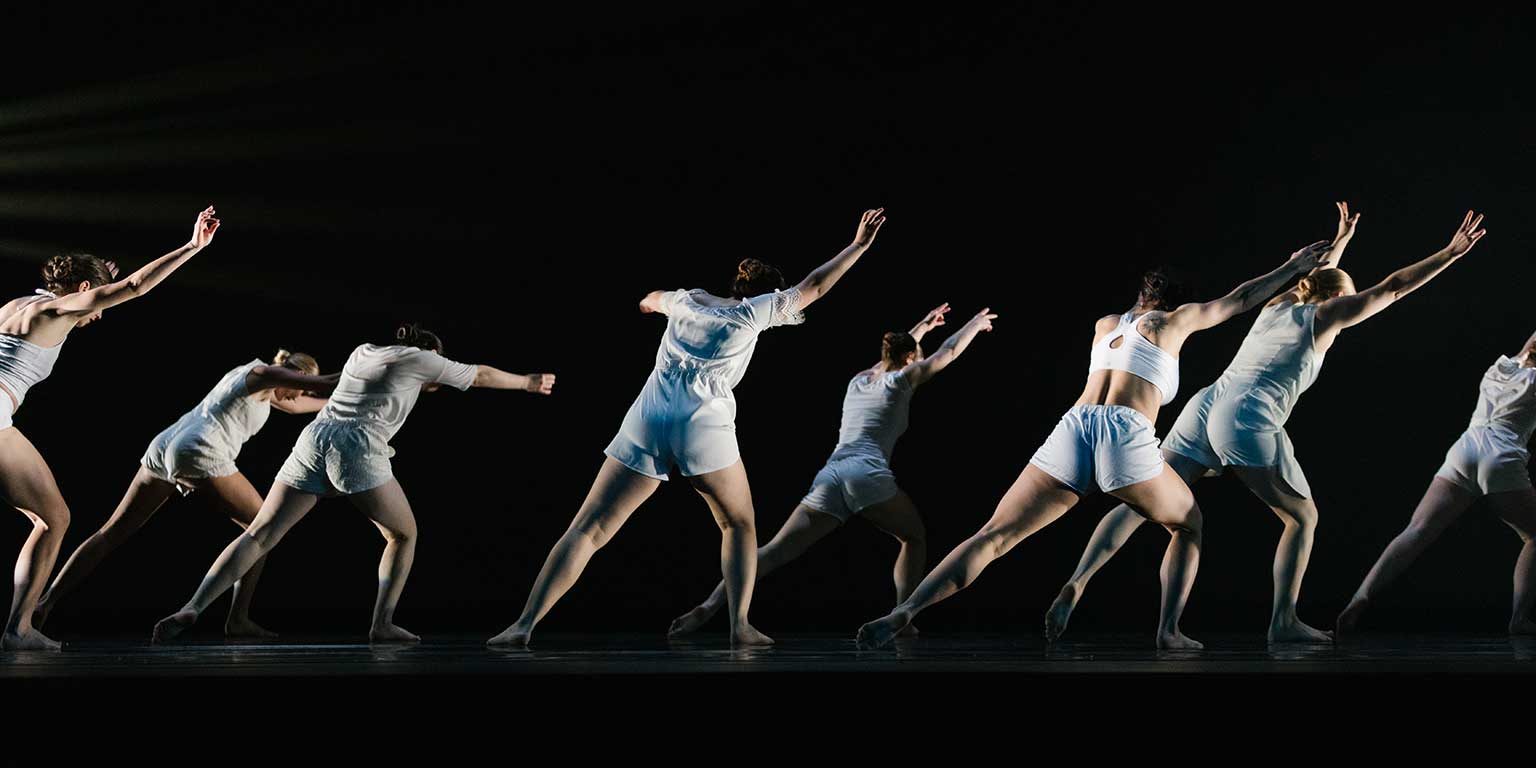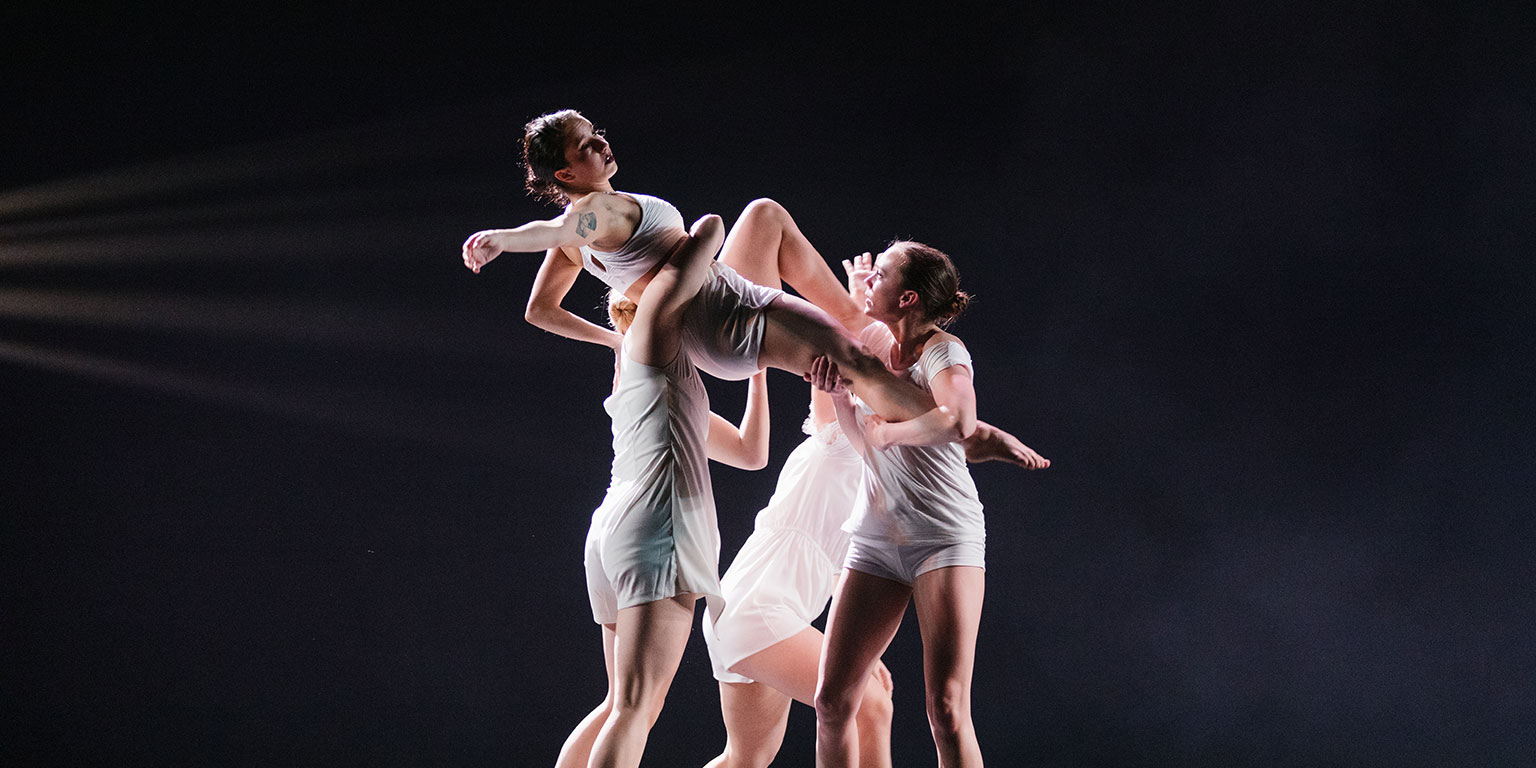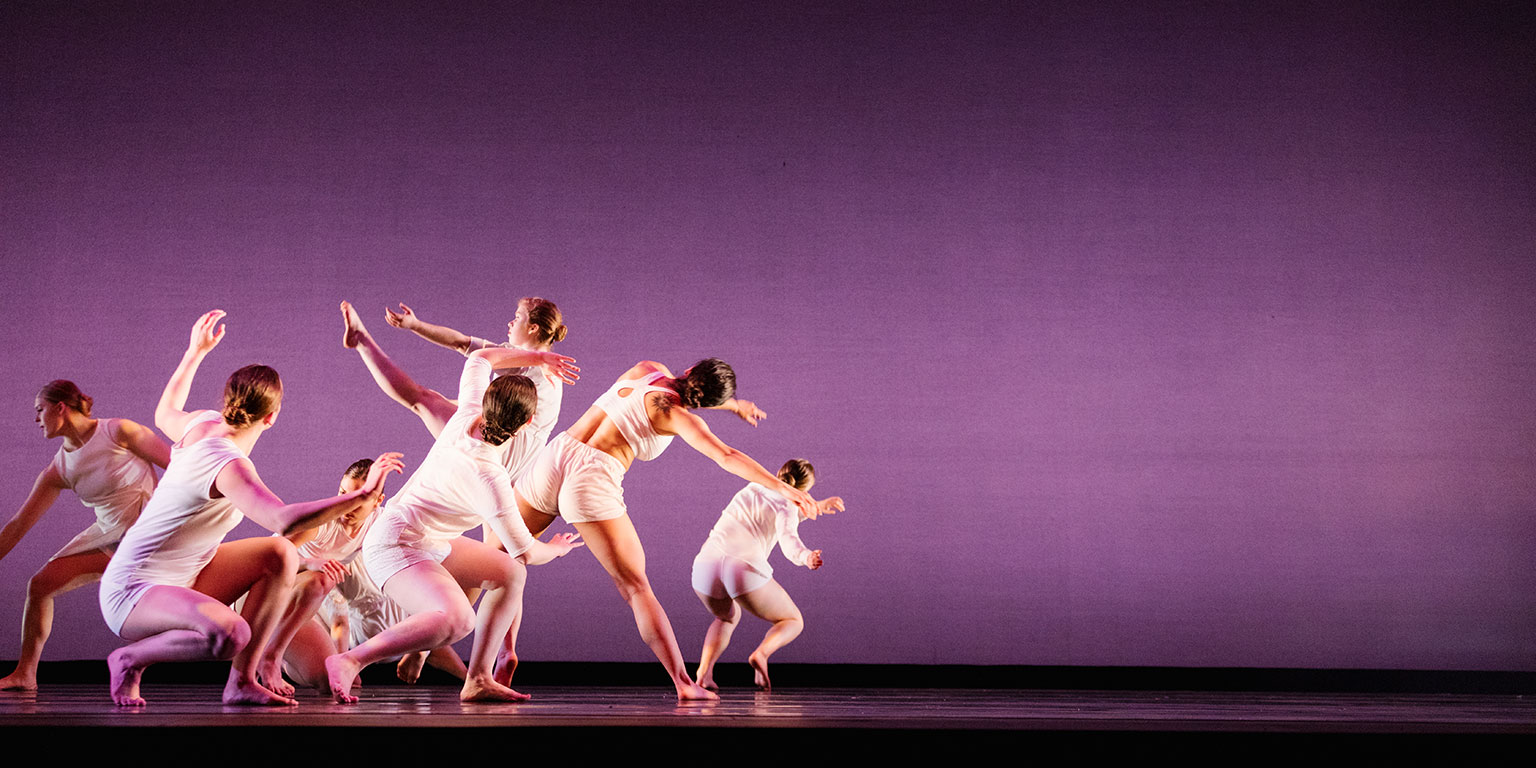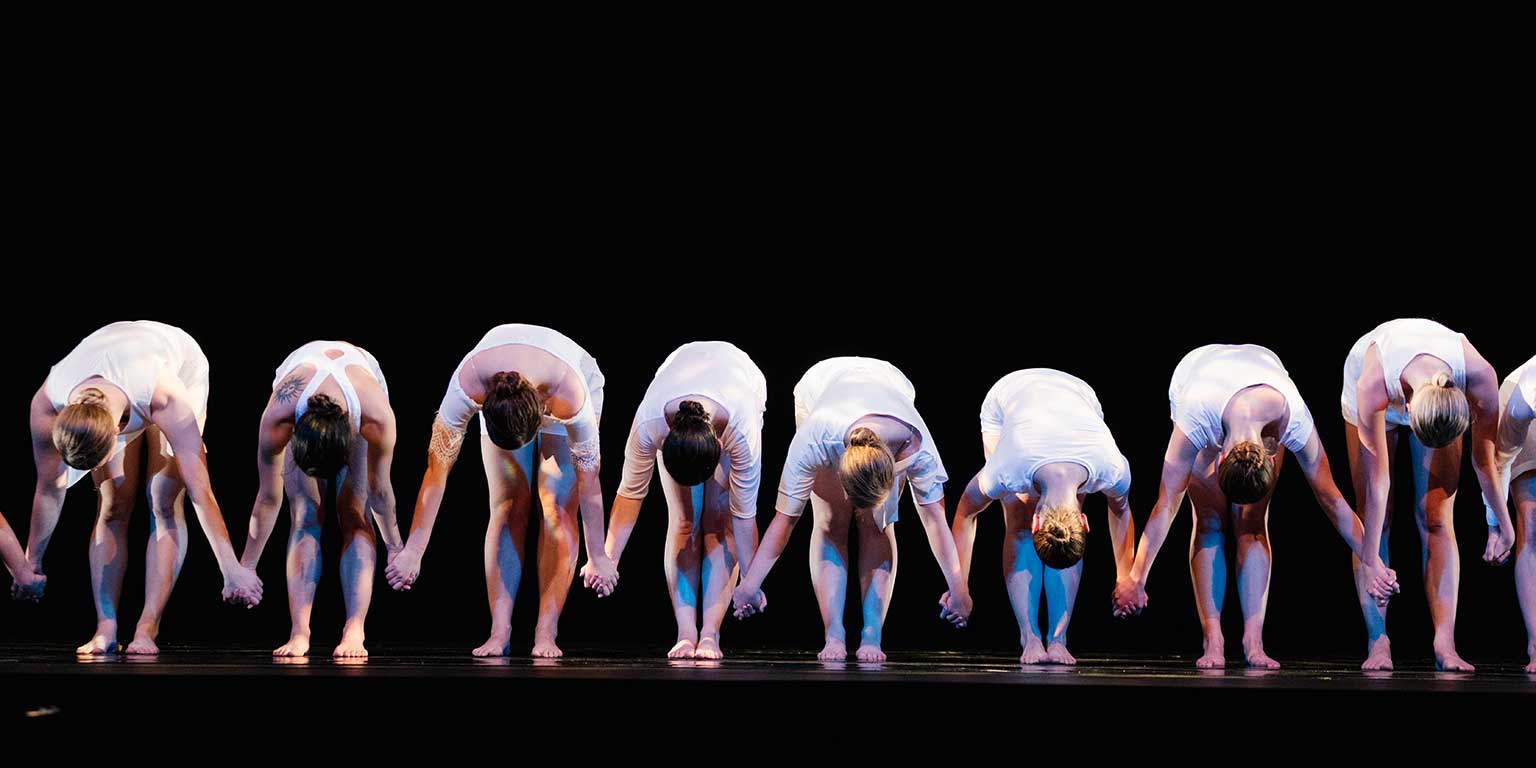By Raymond Fleischmann | Summer 2019
Photography by Anna Powell Denton
“Movement never lies,” said Martha Graham, one of the pioneers of twentieth-century dance, and it’s easy to understand the wisdom of this observation when you watch a contemporary dance performance. There may not be a story. There may not be characters, or at least not exactly. But there’s truth in every motion and every movement — honesty and personality made physical.
Every year, the Winter Dance Concert is a marquee performance within the College’s Department of Theatre, Drama, and Contemporary Dance. This past year, the concert was titled Making Spaces, and it was directed by Professor Elizabeth Limons Shea, a choreographer and artist whose work has been performed at the Kennedy Center in Washington, D.C., and produced by the American Dance Guild, the Boston Contemporary Dance Festival, and the Detroit Dance City Festival, just to name a few.
If movement never lies, then the Winter Dance Concert is kinetic proof that the truth can be a beautiful thing. The performances are stunning — the angles of the lighting and the dynamism of the dancers like something from a dream — and The College Magazine was there to capture it in a wonderful new photo essay.



